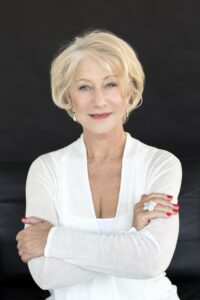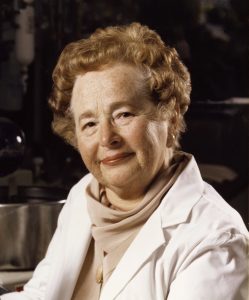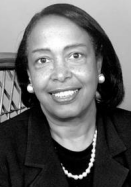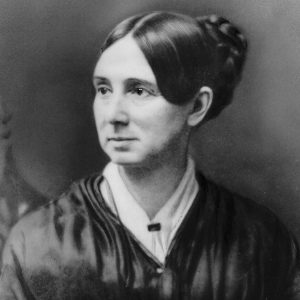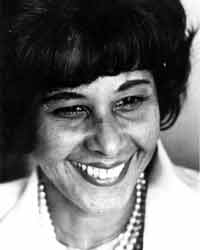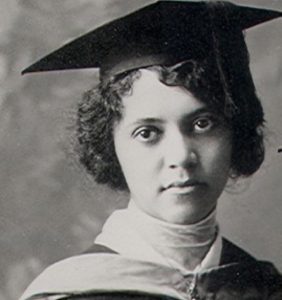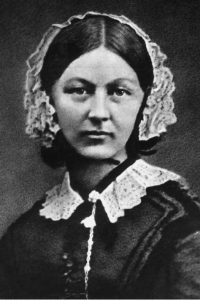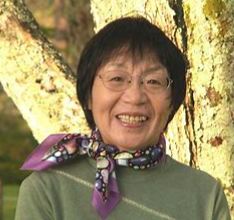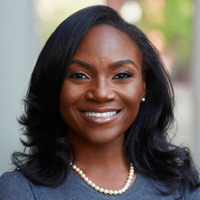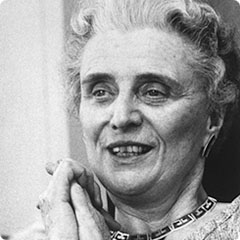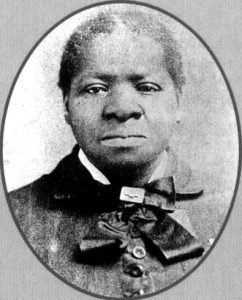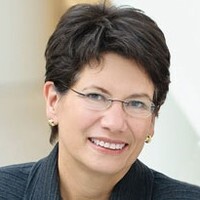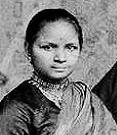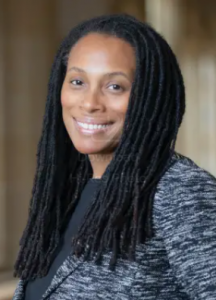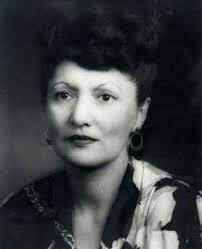Women’s History Month 2023 – Tribune Entries
Each year, AAUW La Crosse members research and write daily biographies of women for the month of March.
Sponsored by: AAUW, La Crosse Branch
Researched by: Lois Gilbert, MLS & Liza Gilbert, MLS
Introduction: The 2023 theme for Women’s History Month is “The Women Who Tell Our Stories.” Set by the National Women’s History Alliance, this theme is in “Recognition of women, past and present, who have been active in all forms of media and storytelling, including print, radio, TV, stage, screen, blogs, podcasts, news, and social media. These are women who have been making our collective history visible. They have devoted their lives and talents to providing art and news, pursing truth, and reflecting society decade after decade.”
Wednesday, March 1, 2023
Barbara Walters (1929-2022)
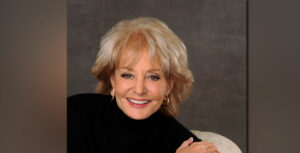 Barbara Walters was an American broadcast journalist. She was known not only for her interviewing ability, but also for her tenacious pursuit in interviewing people other journalists could not. She started as a writer and researcher on NBC’s Today Show, then advancing her career at ABC Evening News and ABC 20/20. In 1976, Walters became the first journalist of any gender to garner a salary of 1 million dollars (in today’s money, over 5 million dollars). She presented an annual news special of the 10 Most Fascinating People, and in 1997 created the TV show The View. Of her most famous and groundbreaking interviews, she interviewed Menachem Begin, Anwar Sadat, and Fidel Castro in 1977. Also that year, Walters was inducted into The Academy of Television Arts and Sciences’ Hall of Fame. In 1980, Walters was the first person to interview Richard Nixon after he left the White House, daring to ask him if he regretted burning the Watergate tapes. Throughout her career, Walters steadfastly battled sexism in news broadcasting. In her later years, she battled ageism. To learn more about this barrier-breaking newswoman, you can read her popular book How to Talk with Practically Anybody about Practically Anything and her autobiography entitled Audition.
Barbara Walters was an American broadcast journalist. She was known not only for her interviewing ability, but also for her tenacious pursuit in interviewing people other journalists could not. She started as a writer and researcher on NBC’s Today Show, then advancing her career at ABC Evening News and ABC 20/20. In 1976, Walters became the first journalist of any gender to garner a salary of 1 million dollars (in today’s money, over 5 million dollars). She presented an annual news special of the 10 Most Fascinating People, and in 1997 created the TV show The View. Of her most famous and groundbreaking interviews, she interviewed Menachem Begin, Anwar Sadat, and Fidel Castro in 1977. Also that year, Walters was inducted into The Academy of Television Arts and Sciences’ Hall of Fame. In 1980, Walters was the first person to interview Richard Nixon after he left the White House, daring to ask him if he regretted burning the Watergate tapes. Throughout her career, Walters steadfastly battled sexism in news broadcasting. In her later years, she battled ageism. To learn more about this barrier-breaking newswoman, you can read her popular book How to Talk with Practically Anybody about Practically Anything and her autobiography entitled Audition.
Thursday, March 2, 2023
Margaret Bourke-White (1904-1971)
 Margaret Bourke-White was a world-famous photographer, journalist, and social activist. After the University of Michigan printed, as an artistic collection, the photos she took as the school yearbook photographer, Bourke-White became an industrial photographer then a magazine cover photographer. She traveled the world, becoming a highly effective chronicler of violence. Her life can be recounted as a series of firsts. She was the first female photographer for Life Magazine, the first foreign photographer allowed to take photos inside the Soviet Union during their Five Year Plan, and the first known American correspondent allowed to work in combat zones during World War II. She was the only foreign correspondent of any gender in Moscow during the beginning of the German invasion. She was under fire so often, that Life Magazine staff started calling her “Maggie the Indestructible.” Believing that an artist has a duty to change the world through their art, her artistic style of social realism gave everyone a view of the Buchenwald Nazi concentration camp, the Korean War, and the last interview of Gandhi, completed only six hours before his assassination.
Margaret Bourke-White was a world-famous photographer, journalist, and social activist. After the University of Michigan printed, as an artistic collection, the photos she took as the school yearbook photographer, Bourke-White became an industrial photographer then a magazine cover photographer. She traveled the world, becoming a highly effective chronicler of violence. Her life can be recounted as a series of firsts. She was the first female photographer for Life Magazine, the first foreign photographer allowed to take photos inside the Soviet Union during their Five Year Plan, and the first known American correspondent allowed to work in combat zones during World War II. She was the only foreign correspondent of any gender in Moscow during the beginning of the German invasion. She was under fire so often, that Life Magazine staff started calling her “Maggie the Indestructible.” Believing that an artist has a duty to change the world through their art, her artistic style of social realism gave everyone a view of the Buchenwald Nazi concentration camp, the Korean War, and the last interview of Gandhi, completed only six hours before his assassination.
Friday, March 3, 2023
Dame Helen Mirren (1945- )
Mirren has acted in film, television, and on stage in comedies, mysteries, historical pieces, horror, and more. Mirren joined Britain’s National Youth Theatre at the age of 18 and the Royal Shakespeare Company one year later. In both the UK and the US, she has had a highly successful acting career for over 5 decades.
Mirren has made women’s history visible through her portrayals of three British queens: Elizabeth I, Elizabeth II, and Queen Charlotte, as well as Catherine the Great, Empress of Russia. Among her numerous acting awards, Mirren is the only performer of any gender to win the Triple Crown of acting (winning an Academy Award, an Emmy Award, and a Tony Award) in both the UK and the US.
Of particular value to the portrayal of women in history are her roles in the BBC detective series Prime Suspect and her portrayal of Queen Elizabeth the II in The Queen. In Prime Suspect she depicted a female detective under relentless pressure to prove herself in a traditionally male career, as well as making reproductive choices not typically shown on TV shows. In The Queen, Mirren portrayed the response of the British monarchy to the death of Princess Diana through the reaction of Queen Elizabeth II. In 2003, Elizabeth II made Helen Mirren a Dame Commander of the British Empire.
Saturday, March 4, 2023
Barbara Ehrenreich (1941-2022)
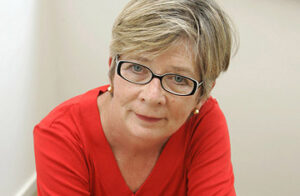 Author of 21 books, Barbara Ehrenreich was also a social critic, journalist, and activist. Born into a family of union supporters with a copper miner as a father, Ehrenreich went to college, studied physics and chemistry, and earned a PhD in cellular immunology. As a teacher and researcher, she became known for her accessible writing style. She was a prolific writer, with several best-selling books, and wrote for a number of other publications. She is perhaps best known as the author of Nickle and Dimed: Or (Not) Getting By in America. For 3 months in 2001, she went undercover to research this memoir. Ehrenreich tried to survive on a the wages from a series of minimum wage jobs: a waitress, a housekeeper, and then an employee in a big box store. Ehrenreich spent a significant amount of time speaking with other minimum wage workers, each only earning 7 dollars an hour. In her book, she concluded that unless someone worked at least 2 minimum wage jobs, it was impossible to pay for both food and rent, mostly due to the inability for minimum wage workers to find affordable housing. Her contribution to the depiction of women in history was through her work challenging the reality of the American Dream, calling attention to poverty in the US, writing about the American health empire, attacks on social welfare, and feminism.
Author of 21 books, Barbara Ehrenreich was also a social critic, journalist, and activist. Born into a family of union supporters with a copper miner as a father, Ehrenreich went to college, studied physics and chemistry, and earned a PhD in cellular immunology. As a teacher and researcher, she became known for her accessible writing style. She was a prolific writer, with several best-selling books, and wrote for a number of other publications. She is perhaps best known as the author of Nickle and Dimed: Or (Not) Getting By in America. For 3 months in 2001, she went undercover to research this memoir. Ehrenreich tried to survive on a the wages from a series of minimum wage jobs: a waitress, a housekeeper, and then an employee in a big box store. Ehrenreich spent a significant amount of time speaking with other minimum wage workers, each only earning 7 dollars an hour. In her book, she concluded that unless someone worked at least 2 minimum wage jobs, it was impossible to pay for both food and rent, mostly due to the inability for minimum wage workers to find affordable housing. Her contribution to the depiction of women in history was through her work challenging the reality of the American Dream, calling attention to poverty in the US, writing about the American health empire, attacks on social welfare, and feminism.
Sunday, March 5, 2023
The History Chicks Podcast (2010- )
 Created by Kansas City Star columnist Susan Vollenweider and theater major Beckett Graham, This History Chicks Podcast is a free, informative, and conversational exploration of both real and fictional women throughout world history. The popularity and likability of the podcast has spread it to Facebook, Twitter, Pinterest, Instagram, and their own private Facebook group, The Lounge, and there are currently over 200 episodes to stream.
Created by Kansas City Star columnist Susan Vollenweider and theater major Beckett Graham, This History Chicks Podcast is a free, informative, and conversational exploration of both real and fictional women throughout world history. The popularity and likability of the podcast has spread it to Facebook, Twitter, Pinterest, Instagram, and their own private Facebook group, The Lounge, and there are currently over 200 episodes to stream.
Their zeal, enthusiasm, and respect is infectious, and even complex women who behaved dubiously are explained within the context of their times. Graham and Vollenweider present their very-well researched information in a highly engaging and conversational way. At the end of each episode the hosts discuss the books and resources they used in their research, provide extensive additional material on their social media accounts, and always recommend the use of public libraries.
Episodes can last from mini-casts that are only a few minutes long to full podcasts over an hour. Their enthusiasm and research skills often lead one to wonder why fascinating HERstories haven’t been better documented, as well as a craving for more information about the women who came before us. Both Graham and Vollenweider are active on the podcast’s social media site and provide multiple ways to contact them with questions, suggestions and comments. The History Chicks can be streamed for free on their website: thehistorychicks.com, Spotify, Apple podcasts, iHeart, and more.
Monday, March 6, 2023
Gloria Steinem (1934 )
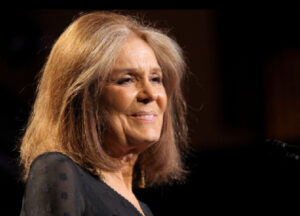 Gloria Steinem has become the American woman most identified with the women’s liberation movement of the 1960s and 1970s. Steinem is the daughter of a traveling salesman and a journalist, and saw her father desert the family when she was only 10 years-old. At that age, Steinem was left alone to care for her mother who suffered from severe depression.
Gloria Steinem has become the American woman most identified with the women’s liberation movement of the 1960s and 1970s. Steinem is the daughter of a traveling salesman and a journalist, and saw her father desert the family when she was only 10 years-old. At that age, Steinem was left alone to care for her mother who suffered from severe depression.
After graduating from Smith College, she started her professional journalism career in New York as a freelance writer. She found it very difficult for female journalists to get hard news assignments in the 1950s and 1960s, since men ran the newsrooms and women were relegated to secretarial roles. When she asked her editor if she could write political stories, her editor replied, “I don’t think of you that way.”
In 1963 she helped change the perception of female reporters after going undercover in Hugh Hefner’s Playboy Club, resulting in the article, “I Was a Playboy Bunny,” detailing the treatment of women and their working conditions at the Club. In 1971, along with Black activist Dorothy Pitman-Hughes, Steinem founded Ms. Magazine. At the time it was the only mass-circulated feminist magazine in America. In 1990, Steinem helped establish Take Our Daughter to Work Day, the first nationwide effort to help young girls learn about career opportunities. In 2013, President Obama presented her with the Presidential Medal of Freedom, the highest civilian honor in the United States.
Tuesday, March 7, 2023
Nellie Bly (1865-1922)
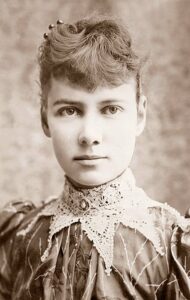 Nellie Bly was born Elizabeth Cochran in Pennsylvania, the thirteenth of fifteen children, and had only one term of formal education. Her start in journalism came at age 19 after she answered a newspaper editorial which argued that girls were only good for birthing children and doing housework. Cochran’s angry response so impressed the editor that he hired her. Because she was worried her parents would not approve of her journalism career, she sent her editorial response under the name Nelly Bly, based on a popular song. When Nelly was misspelled as Nellie, she continued writing under that name. Nellie’s desire to not be relegated to the traditional roles of women in journalism led her to take on the situation at the Blackwell’s Island mental asylum. Rumors had been circulating that conditions there were very poor, and Bly volunteered to have herself legally committed at the asylum to report on the story. Her reporting after leaving the asylum, “Ten Days in a Mad House,” led not only to reform, but to significantly more opportunities for women in journalism. She continued to expose the situations of women by reporting on dangerous working conditions in factories and the garment industry. Her daring reporting lead her to a major adventure in 1889 when she set out to break the around the world in 80 days record of Jules Verne’s fictional character Phileas Fogg. Bly was halfway through her journey before she realized a rival newspaper had also sent a female reporter on the same journey. Using a wide variety of modes of transportation, with only two days notice to prepare for the journey, and carrying only one piece of luggage the size of a breadbox, Nellie Bly won by making it around the world in 72 days. While her journey made her famous around the world, Bly eventually quit journalism and dedicated her life to social reform, championing poor women, working women, and orphans.
Nellie Bly was born Elizabeth Cochran in Pennsylvania, the thirteenth of fifteen children, and had only one term of formal education. Her start in journalism came at age 19 after she answered a newspaper editorial which argued that girls were only good for birthing children and doing housework. Cochran’s angry response so impressed the editor that he hired her. Because she was worried her parents would not approve of her journalism career, she sent her editorial response under the name Nelly Bly, based on a popular song. When Nelly was misspelled as Nellie, she continued writing under that name. Nellie’s desire to not be relegated to the traditional roles of women in journalism led her to take on the situation at the Blackwell’s Island mental asylum. Rumors had been circulating that conditions there were very poor, and Bly volunteered to have herself legally committed at the asylum to report on the story. Her reporting after leaving the asylum, “Ten Days in a Mad House,” led not only to reform, but to significantly more opportunities for women in journalism. She continued to expose the situations of women by reporting on dangerous working conditions in factories and the garment industry. Her daring reporting lead her to a major adventure in 1889 when she set out to break the around the world in 80 days record of Jules Verne’s fictional character Phileas Fogg. Bly was halfway through her journey before she realized a rival newspaper had also sent a female reporter on the same journey. Using a wide variety of modes of transportation, with only two days notice to prepare for the journey, and carrying only one piece of luggage the size of a breadbox, Nellie Bly won by making it around the world in 72 days. While her journey made her famous around the world, Bly eventually quit journalism and dedicated her life to social reform, championing poor women, working women, and orphans.
Wednesday, March 8. 2023
Shonda Rhimes (1970 – )

“I’ve always been an introverted person,” Shonda Rhimes says, and she found the fame that came with her television successes to be “daunting.”
Rhimes grew up in a Chicago suburb with the dream of becoming a novelist. Her work ethic was shaped by watching her mother earn a PhD while raising 6 children. After graduating from film school at the University of Southern California, Rhimes co-wrote the screenplay for Introducing Dorothy Dandridge. In the lead role, Halle Berry became the first Black woman ever to be nominated for an Academy Award for Best Actress. Rhimes went on to write and produce the medical drama Grey’s Anatomy, reshaping the television industry by casting Black, Asian, and Latino actors. In 2012, Rhimes wrote and produced Scandal, a political drama starring Kerry Washington. Scandal was the first time in four decades that a Black woman held the lead in a TV show. In 2014, Rhimes followed up on Scandal’s success with How to Get Away With Murder starring another Black actress, Viola Davis. In 2015, she wrote the advice book Year of Yes: How to Dance It Out, Stand in the Sun, and Be Your Own Person. The recent hit show Bridgerton, which started as a series of Regency romance novels by Julia Quinn, was another opportunity for Rhimes to change the face of television. As its executive-producer, Rhimes chose to employ a multiracial cast, including casting Black actress Golda Rosheuvel as the British Queen Charlotte. The career of Shonda Rimes has been an expression of her belief that all races should be represented on television. Her strong female characters, interracial relationships, and frank depictions of poverty, domestic violence, sexuality, and race have become the Shondaland standard.
Thursday, March 9, 2023
Martha Gellhorn (1908-1998)
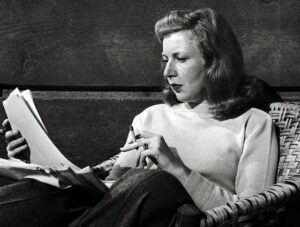 Born in St. Louis, Gellhorn attended Bryn Mawr college and left in 1927 to become a reporter. When President Franklin Delano Roosevelt, in 1933, created the Federal Emergency Relief Administration, he sent 16 journalists to collect data about how the nation was suffering under the Great Depression. At the age of 25, Martha Gellhorn was the youngest of these reporters who were tasked with sending their information back in classified documents. Her reports detailed the horrors of child prostitution and hunger. Her passionate reporting about social injustices would continue to be her hallmark. From 1936-1945, Gellhorn was a war reporter. During WWII she covered the Blitz in London, and once stowed away on a hospital ship and came ashore disguised as a stretcher bearer to report on the battle conditions. Gellhorn was the first woman on the beach at the invasion of Normandy. Her descriptions of Hitler’s concentration camps became some of the most famous reporting on the camps. She would later say that what she witnessed at the camps would forever darken her outlook on life.
Born in St. Louis, Gellhorn attended Bryn Mawr college and left in 1927 to become a reporter. When President Franklin Delano Roosevelt, in 1933, created the Federal Emergency Relief Administration, he sent 16 journalists to collect data about how the nation was suffering under the Great Depression. At the age of 25, Martha Gellhorn was the youngest of these reporters who were tasked with sending their information back in classified documents. Her reports detailed the horrors of child prostitution and hunger. Her passionate reporting about social injustices would continue to be her hallmark. From 1936-1945, Gellhorn was a war reporter. During WWII she covered the Blitz in London, and once stowed away on a hospital ship and came ashore disguised as a stretcher bearer to report on the battle conditions. Gellhorn was the first woman on the beach at the invasion of Normandy. Her descriptions of Hitler’s concentration camps became some of the most famous reporting on the camps. She would later say that what she witnessed at the camps would forever darken her outlook on life.
Despite Martha Gellhorn’s sterling credentials as an accomplished reporter, she often appears as a footnote in history as the third wife of novelist Ernest Hemingway. The two were married from 1940 until she left him in 1945. She claimed he was a bully who wanted a deferential wife. She said she just wanted to live a life as he did.
Friday, March 10. 2023
The Mayyas (2019 – )
 Formed by dance instructor and choreographer Nadim Cherfan, The Mayyas is an all-female precision dance group. Cherfan selected 36 of his 200 students to form the group, which is originally from Beirut, Lebanon. Many may known The Mayyas as the winner of America’s Got Talent in 2022, but to many Arabs, The Mayyas represent female empowerment in a country whose culture is strongly against it. In their first audition on America’s Got Talent (they had already won Arabs Got Talent and made it to the semi-finals in Britain’s Got Talent), the spokeswoman for the group said that their name means “The proud walk of a lioness.” She continued by saying that the group hoped to show what Arab women can do. Cherfan has stated that The Mayyas always had support from their friends and family, but not the government. According to the United Nations, two-thirds of Lebanese women experience sexual harassment while out in public, and a third of Lebanese men believe if a woman is raped it is her duty to marry her assailant. Many of The Mayyas’ dancers have left Lebanon in order to safely continue dancing. In an interview with NBC, Cherfan stated that he hopes, because of the international success of The Mayyas (whose performances have been seen over 70 million times just on YouTube alone) that the situation in Lebanon for women will change. Their presence on Instagram, with an official The Mayyas account, Cherfan’s account, and the accounts of several of the female dancers, the women have very effectively used one of the largest social media platforms to showcase their talent and independence, in direct violation of their home government’s laws and practices. Having performed since their AGT win with Beyoncé and in partnership with Tiffany & Co., The Mayyas have continued to demonstrate that even women under repressive government regimes have exceptional talents and skills.
Formed by dance instructor and choreographer Nadim Cherfan, The Mayyas is an all-female precision dance group. Cherfan selected 36 of his 200 students to form the group, which is originally from Beirut, Lebanon. Many may known The Mayyas as the winner of America’s Got Talent in 2022, but to many Arabs, The Mayyas represent female empowerment in a country whose culture is strongly against it. In their first audition on America’s Got Talent (they had already won Arabs Got Talent and made it to the semi-finals in Britain’s Got Talent), the spokeswoman for the group said that their name means “The proud walk of a lioness.” She continued by saying that the group hoped to show what Arab women can do. Cherfan has stated that The Mayyas always had support from their friends and family, but not the government. According to the United Nations, two-thirds of Lebanese women experience sexual harassment while out in public, and a third of Lebanese men believe if a woman is raped it is her duty to marry her assailant. Many of The Mayyas’ dancers have left Lebanon in order to safely continue dancing. In an interview with NBC, Cherfan stated that he hopes, because of the international success of The Mayyas (whose performances have been seen over 70 million times just on YouTube alone) that the situation in Lebanon for women will change. Their presence on Instagram, with an official The Mayyas account, Cherfan’s account, and the accounts of several of the female dancers, the women have very effectively used one of the largest social media platforms to showcase their talent and independence, in direct violation of their home government’s laws and practices. Having performed since their AGT win with Beyoncé and in partnership with Tiffany & Co., The Mayyas have continued to demonstrate that even women under repressive government regimes have exceptional talents and skills.
Saturday, March 11. 2023
Michelle Yeoh (1962 – )
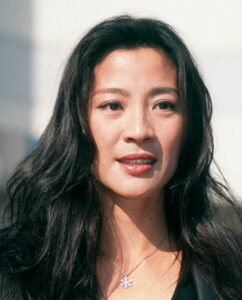 Born to a wealthy family in Malaysia, Michelle Yeoh trained as a ballet dancer from age 4. When she was 15, she moved to England to attend London’s Royal Academy of Dance. However, a back injury eliminated her hopes of having a career performing ballet. After returning to Malaysia and being crowned Miss Malaysia in 1983, she was cast in a wristwatch commercial with Jackie Chan. As she began to get jobs in the film industry, she worked under the name Michelle Khan, as it was considered more ethnically ambiguous.
Born to a wealthy family in Malaysia, Michelle Yeoh trained as a ballet dancer from age 4. When she was 15, she moved to England to attend London’s Royal Academy of Dance. However, a back injury eliminated her hopes of having a career performing ballet. After returning to Malaysia and being crowned Miss Malaysia in 1983, she was cast in a wristwatch commercial with Jackie Chan. As she began to get jobs in the film industry, she worked under the name Michelle Khan, as it was considered more ethnically ambiguous.
Her film career has been very physically demanding, and Yeoh became very proficient in martial arts. She has battled Jet Li, thrown herself into a car driven by Jackie Chan, and jumped off a skyscraper with James Bond. She has performed in Marvel, Star Trek, Kung Fu Panda, and Avatar films. But due to her stance on women’s roles in the film industry, she had never been at the top of a Hollywood call sheet until she starred in the 2022 film Everything Everywhere All at Once. In this role, she played an overworked immigrant wife and mother confronted with an IRS audit of the family laundromat. To date, Yeoh has won the Golden Globe Award for best actress in a musical or comedy, the first Golden Globe won by a Malaysian. Time magazine has also just named Yeoh the Icon of the Year for 2022. Through her conviction to not perpetuate harmful stereotypes and cliches about Asian women, she has become the standard bearer for the capabilities of Asian actresses. An Oscar win for “Everything Everywhere All at Once” would be the first by an Asian woman in the category of Best Actress.
Saturday, March 12. 2023
The Women of Iran
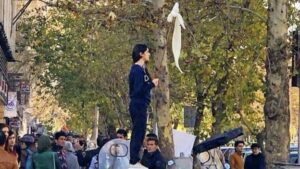 On September 17, 2022, protests broke out in numerous Iranian cities as women began shouting “Women! Life! Freedom!.” Five days earlier, a 22 year-old Iranian woman, Masha Amini, was arrested for “inappropriate attire.” The morality police of the Iranian government, called The Guidance Patrol, had claimed she was wearing her hijab (headscarf) improperly. Four days later, she had died. Authorities said she had been taken to a station to be “educated” and suffered a heart attack. Masha’s father said his daughter had never had heart problems, and her body showed numerous bruises. Thousands of mourners and protesters attended her funeral.
On September 17, 2022, protests broke out in numerous Iranian cities as women began shouting “Women! Life! Freedom!.” Five days earlier, a 22 year-old Iranian woman, Masha Amini, was arrested for “inappropriate attire.” The morality police of the Iranian government, called The Guidance Patrol, had claimed she was wearing her hijab (headscarf) improperly. Four days later, she had died. Authorities said she had been taken to a station to be “educated” and suffered a heart attack. Masha’s father said his daughter had never had heart problems, and her body showed numerous bruises. Thousands of mourners and protesters attended her funeral.
This was not the first time the women of Iran have protested the dress code violently imposed in Iran. 5 years earlier, Vida Movahed stood atop a box on Tehran’s busy Revolution Street, and tied her hijab to a stick in challenge to the nation’s forced dress code for women. Many other Iranian women have joined these protests and the movement has taken the name #TheGirlsofRevolutionStreet. These women have rejected the state vision for women and are demanding freedom. This is the longest
and most sustained protest in the 43 year history of Iran. It has resulted in sanctions by the US government against the military in Tehran which has responded to the protests with deadly force. At the latest World Cup, the team from Iran stood silent during their national anthem. The courage and persistence of the women of Iran has awarded them Time magazine’s 2022 title, Heroes of the Year.
March 13, 2023
Sandra Cisneros (1954 – )
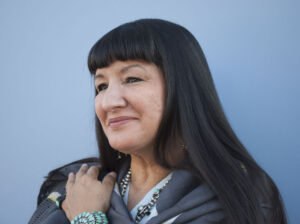 Born in Chicago to Mexican immigrant parents, Sandra Cisneros earned a master’s degree in creative writing from the University of Iowa. She then became a teacher working with students who had dropped out of school. Cisneros is best known for her first novel, The House on Mango Street, which has sold over 6 million copies and has been translated into over 20 languages. The novel features a young Chicana girl and her adolescent experience dealing with poverty and a male-driven society. In 1991, Cisneros published Woman Hollering Creek and Other Stories. Through a series of short stories Cisneros addressed the social role of women in Latino society, in particular the search for female identity when continually facing the harmful clichés that women are either passive girls, seductresses, or toxic mothers. In 2016, President Obama presented Cisneros with the National Medal of Arts. In his remarks he said she was being honored for, “Enriching the American narrative. Through her novels, short stories, and poetry she explores issues of race, class, and gender through the stories of ordinary people straddling multiple cultures. As an educator, she has deepened our understanding of American identity.” Her latest work from 2022 is Woman Without Shame: Poems, Cisneros’ thoughts on aging, desire, self-love, and solitude.
Born in Chicago to Mexican immigrant parents, Sandra Cisneros earned a master’s degree in creative writing from the University of Iowa. She then became a teacher working with students who had dropped out of school. Cisneros is best known for her first novel, The House on Mango Street, which has sold over 6 million copies and has been translated into over 20 languages. The novel features a young Chicana girl and her adolescent experience dealing with poverty and a male-driven society. In 1991, Cisneros published Woman Hollering Creek and Other Stories. Through a series of short stories Cisneros addressed the social role of women in Latino society, in particular the search for female identity when continually facing the harmful clichés that women are either passive girls, seductresses, or toxic mothers. In 2016, President Obama presented Cisneros with the National Medal of Arts. In his remarks he said she was being honored for, “Enriching the American narrative. Through her novels, short stories, and poetry she explores issues of race, class, and gender through the stories of ordinary people straddling multiple cultures. As an educator, she has deepened our understanding of American identity.” Her latest work from 2022 is Woman Without Shame: Poems, Cisneros’ thoughts on aging, desire, self-love, and solitude.
March 14, 2023
Simone de Beauvoir (1908-1986)
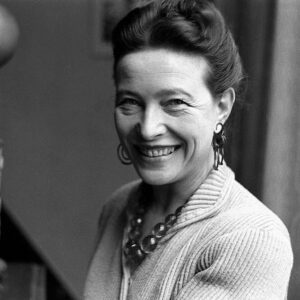 Born in Paris to a middle-class Catholic family, Simone de Beauvoir helped create the foundation for the modern feminist movement. Deeply religious as a young girl, she considered becoming a nun before having a crisis of faith at the age of 14. De Beauvoir instead decided to concentrate on the studies of math, literature, and philosophy. She was a great intellect, and climbed to the top of her class at the Sorbonne. For much of her life, Simone had a relationship with the existential philosopher Jean-Paul Sartre, although she rejected his marriage proposal and they never lived under the same roof. Their relationship was one of mutual respect for each others’ intellect. Throughout the 1930s, de Beauvoir taught philosophy and literature, and in 1949 she published her most famous book, the Second Sex. It is a 972-page criticism of patriarchy and of women only being granted second- rate status. It was met with harsh criticism at the time and the Vatican placed it on the church’s list of forbidden books. Originally translated into English in 1952, 145 pages were omitted. In 2009 an unedited English version was published and shored up her reputation as one of the great intellects of modern feminism. Throughout her life, de Beauvoir maintained that it is very difficult for a woman to set her path in life due to the expectations and demands of the dominant male culture.
Born in Paris to a middle-class Catholic family, Simone de Beauvoir helped create the foundation for the modern feminist movement. Deeply religious as a young girl, she considered becoming a nun before having a crisis of faith at the age of 14. De Beauvoir instead decided to concentrate on the studies of math, literature, and philosophy. She was a great intellect, and climbed to the top of her class at the Sorbonne. For much of her life, Simone had a relationship with the existential philosopher Jean-Paul Sartre, although she rejected his marriage proposal and they never lived under the same roof. Their relationship was one of mutual respect for each others’ intellect. Throughout the 1930s, de Beauvoir taught philosophy and literature, and in 1949 she published her most famous book, the Second Sex. It is a 972-page criticism of patriarchy and of women only being granted second- rate status. It was met with harsh criticism at the time and the Vatican placed it on the church’s list of forbidden books. Originally translated into English in 1952, 145 pages were omitted. In 2009 an unedited English version was published and shored up her reputation as one of the great intellects of modern feminism. Throughout her life, de Beauvoir maintained that it is very difficult for a woman to set her path in life due to the expectations and demands of the dominant male culture.
March 15, 2023
Ruth Bader Ginsburg (1933-2020)
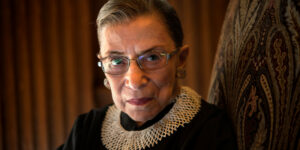
WASHINGTON, DC – AUGUST 30: Supreme Court Justice Ruth Bader Ginsburg, celebrating her 20th anniversary on the bench, is photographed in the West conference room at the U.S. Supreme Court in Washington, D.C., on Friday, August 30, 2013. (Photo by Nikki Kahn/The Washington Post via Getty Images)
Born in Brooklyn to Russian immigrants, Ginsburg was encouraged to gain an education by her mother. At Harvard, Ginsburg was one of only 9 women in a class of 500. While attending a dinner held by the dean for the few women in her class, he asked the women to explain what they were “… doing in law school taking a place that could be held by a man.” Despite that sexist view, Ginsburg graduated top of her class from Columbia Law School. Throughout her career, Ginsburg was a
quiet but firm voice that argued for gender equality. In 1972, she helped found the American Civil Liberties Union Women’s Rights Project, and became the first female tenured professor at Columbia Law School. Between 1973 and 1975, Ginsburg argued six gender discrimination cases before the Supreme Court, winning five of them. She was appointed to the Supreme Court in 1993 by President Clinton, the second woman to sit on the Court. Her tenure was known for her active participation in oral arguments, her support for voting rights, support for the Affordable Care Act, and her famous dissents, which she often read aloud. In 2013, a law student created a Tumblr blog entitled The Notorious R.B.G. and turned Justice Ginsburg into a progressive and feminist folk hero, with humorous information on her fashion style with fancy collars on judicial robes, her exercise routines, which were rigorous for her age, her ideas and commentary.
March 16, 2023
Eleanor Roosevelt (1884-1962)
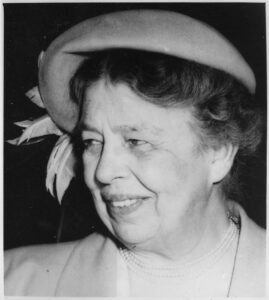 From an early age, Eleanor Roosevelt became involved in social service work, teaching at a settlement house when only 18. At age 21, Eleanor married her 5th cousin Franklin Delano Roosevelt. She became active in The League of Women Voters and The Women’s Trade Union League. When FDR was stricken with polio in 1921, Eleanor took a larger role in his presidency, leading to her being called the president’s “Eyes, ears, and legs.” In 1933, Eleanor became the
From an early age, Eleanor Roosevelt became involved in social service work, teaching at a settlement house when only 18. At age 21, Eleanor married her 5th cousin Franklin Delano Roosevelt. She became active in The League of Women Voters and The Women’s Trade Union League. When FDR was stricken with polio in 1921, Eleanor took a larger role in his presidency, leading to her being called the president’s “Eyes, ears, and legs.” In 1933, Eleanor became the
first First Lady to hold a press conference, to which she invited only women reporters. She wrote a very popular newspaper column entitled “My Day,” which ran from December 1935 until September 1962, 6 days a week until 1961, then 3 days a week. She also hosted a radio show. Eleanor advocated for bringing more women into government, improving health care, more housing for the poor, and full civil rights for minorities. In 1939, she very publicly resigned her membership from the Daughters of the American Revolution because they refused to allow gifted Black American contralto Marian Anderson to perform at Constitution Hall. After FDR died, Eleanor served as a delegate to the United Nations and was instrumental in drafting the Universal Declaration of Human Rights, which was adopted in 1948.
March 17, 2023
Nora Ephron (1941-2012)
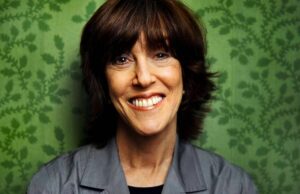 Ephron first worked as a reporter for The New York Post, and wrote comic essays for magazines such as Esquire. She was briefly a White House intern in the Kennedy administration, before becoming a screenwriter. She co-wrote the screenplay for the 1983 suspense film Silkwood, based on the true story of union activist Karen Silkwood who died suspiciously while investigating safety violations at a plutonium processing plant. The resulting movie earned Meryl Streep an Academy Award nomination for Best Actress and a nomination for Ephron for Best Screenplay. What Ephron is most often credited with is inventing the modern romantic comedy. Her trademark was always creating strong and sharp-witted female characters. Her second and third Academy Award nominations for Best Screenplay came for 1989’s When Harry Met Sally and 1993’s Sleepless in Seattle. In 1998 she reunited Tom Hanks and Meg Ryan in You’ve Got Mail, based on the 1940 film The Shop Around the Corner. Ephron also wrote newspaper columns, blog posts, essays, and speeches. Ephron’s contribution to the portrayal of women in film can best be stated through her own words: “I try to write parts for women that are as complicated and interesting as women usually are.”
Ephron first worked as a reporter for The New York Post, and wrote comic essays for magazines such as Esquire. She was briefly a White House intern in the Kennedy administration, before becoming a screenwriter. She co-wrote the screenplay for the 1983 suspense film Silkwood, based on the true story of union activist Karen Silkwood who died suspiciously while investigating safety violations at a plutonium processing plant. The resulting movie earned Meryl Streep an Academy Award nomination for Best Actress and a nomination for Ephron for Best Screenplay. What Ephron is most often credited with is inventing the modern romantic comedy. Her trademark was always creating strong and sharp-witted female characters. Her second and third Academy Award nominations for Best Screenplay came for 1989’s When Harry Met Sally and 1993’s Sleepless in Seattle. In 1998 she reunited Tom Hanks and Meg Ryan in You’ve Got Mail, based on the 1940 film The Shop Around the Corner. Ephron also wrote newspaper columns, blog posts, essays, and speeches. Ephron’s contribution to the portrayal of women in film can best be stated through her own words: “I try to write parts for women that are as complicated and interesting as women usually are.”
March 18, 2923
The Women of Ukraine
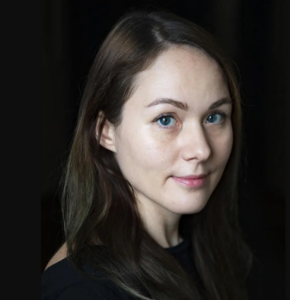 A constant war tactic throughout history has been rape by invading military forces. Under Ukrainian President Zelensky, who has proven that showing the world what is happening in Ukraine through social media is essential to winning a war, the women of Ukraine have a historically unprecedented chance to expose a war tactic that has been used for thousands of years. The biggest problems they face are stigma about rape, fear of retaliation, and the nature of trauma itself: many survivors need years to be able to talk about what happened. Gender alone has proven to be a barrier. Many women will not talk to men about what was done to them by other men, even if the person is investigating or prosecuting those crimes. Women like Kateryna Duchenko who investigates rape cases for Ukraine’s general prosecutor, Yulia Gorbunova from Human Rights Watch, Lyudmyla Denisova who was the top human rights activist in Ukraine, and Oleksandra Kvitko who ran a sexual crime help hotline have helped the women of Ukraine report rape by giving survivors a female advocate to speak to. Yulia Gorbunova, who has been investigating war crimes in Ukraine since 2014, has been able to talk to rape victims quickly, help gather evidence by taking photographs and collecting clothing, and is working with other investigators to bring these crimes to the International Criminal Court in The Hague. In the first six weeks that Kvitko’s hotline operated, they received over 1,500 reports of rape and sexual crimes, with victims ranging from infants to octogenarians. Since history books typically portray wars through perceived acts of bravery, battlefield skirmishes, and the names of military leaders, the women of Ukraine are using their survival stories to not only seek justice, but to ensure that in the reporting of this war, the experiences of women will not
A constant war tactic throughout history has been rape by invading military forces. Under Ukrainian President Zelensky, who has proven that showing the world what is happening in Ukraine through social media is essential to winning a war, the women of Ukraine have a historically unprecedented chance to expose a war tactic that has been used for thousands of years. The biggest problems they face are stigma about rape, fear of retaliation, and the nature of trauma itself: many survivors need years to be able to talk about what happened. Gender alone has proven to be a barrier. Many women will not talk to men about what was done to them by other men, even if the person is investigating or prosecuting those crimes. Women like Kateryna Duchenko who investigates rape cases for Ukraine’s general prosecutor, Yulia Gorbunova from Human Rights Watch, Lyudmyla Denisova who was the top human rights activist in Ukraine, and Oleksandra Kvitko who ran a sexual crime help hotline have helped the women of Ukraine report rape by giving survivors a female advocate to speak to. Yulia Gorbunova, who has been investigating war crimes in Ukraine since 2014, has been able to talk to rape victims quickly, help gather evidence by taking photographs and collecting clothing, and is working with other investigators to bring these crimes to the International Criminal Court in The Hague. In the first six weeks that Kvitko’s hotline operated, they received over 1,500 reports of rape and sexual crimes, with victims ranging from infants to octogenarians. Since history books typically portray wars through perceived acts of bravery, battlefield skirmishes, and the names of military leaders, the women of Ukraine are using their survival stories to not only seek justice, but to ensure that in the reporting of this war, the experiences of women will not
be unwritten.
March 19, 2023
Betty Friedan (1921-2006)
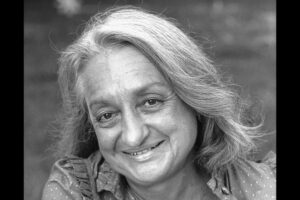 Just as Simone de Beauvoir was the founder of the first wave of the feminist movement with the publication of her book The Second Sex in 1949, Betty Friedan was the founder of the second wave of the feminist movement with the publication in 1963 of her book The Feminine Mystique. Friedan graduated from Smith College in 1942 and studied psychology at the University of California Berkeley, leaving to pursue a journalism career in New York. In the 1950s, she lost her newspaper job after she requested maternity leave. She continued to write for women’s magazines, but was frustrated by the common notion that women should be content with only domestic accomplishments. With the publication of her book in 1963, Friedan discussed how, “The strange discrepancy between the reality of our own lives as women and the image to which we are trying to conform” was causing significant social problems for women. This fictional image of impossibly idealistic womanhood was what she called “the feminine mystique.” In 1966, Friedan co-founded the National Organization for Women, and was president until 1970. She was a tireless campaigner for equal pay for women, government-sponsored childcare, and the adoption of the Equal Rights Amendment. Her voice and viewpoints helped to launch her as one of the influential leaders of the women’s liberation movement of the 1960s and 1970s.
Just as Simone de Beauvoir was the founder of the first wave of the feminist movement with the publication of her book The Second Sex in 1949, Betty Friedan was the founder of the second wave of the feminist movement with the publication in 1963 of her book The Feminine Mystique. Friedan graduated from Smith College in 1942 and studied psychology at the University of California Berkeley, leaving to pursue a journalism career in New York. In the 1950s, she lost her newspaper job after she requested maternity leave. She continued to write for women’s magazines, but was frustrated by the common notion that women should be content with only domestic accomplishments. With the publication of her book in 1963, Friedan discussed how, “The strange discrepancy between the reality of our own lives as women and the image to which we are trying to conform” was causing significant social problems for women. This fictional image of impossibly idealistic womanhood was what she called “the feminine mystique.” In 1966, Friedan co-founded the National Organization for Women, and was president until 1970. She was a tireless campaigner for equal pay for women, government-sponsored childcare, and the adoption of the Equal Rights Amendment. Her voice and viewpoints helped to launch her as one of the influential leaders of the women’s liberation movement of the 1960s and 1970s.
March 20
Barbara Chase-Riboud (1939 – )
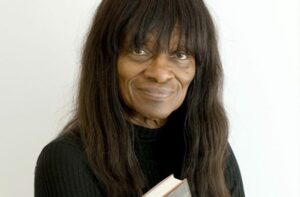 Chase-Riboud is an American novelist and artist, whose controversial novels have helped bring to mainstream readership the real lives of Black women in American history. After graduating from Temple University, Chase-Riboud received a fellowship to study in Rome. Upon her return, she earned a master’s degree in fine arts from Yale. In 1979, Chase-Riboud published what would become an international bestseller, her novel Sally Hemings. Hemings was one of Thomas Jefferson’s many slaves, and Chase-Riboud alleged in her novel that Hemings had given birth to children by Jefferson. A Black author writing about Jefferson not only being a founding father but a father to children from one of his slaves angered and outraged people across the nation. Twenty years after the novel’s publication, DNA samples were taken from descendants of both Jefferson and Hemings. As a result, The Thomas Jefferson Foundation announced that Jefferson was the father of at least 6 children with Hemings, the first conceived before Hemings was 16 years old. In 2022, Chase-Riboud published The Great Mrs. Elias, a novel about the life of Hannah Elias, who, during the Victorian age, became the richest Black woman in the history of America. As an artist, Chase- Riboud has her works on display at the US Federal Building in New York and the Museum of Modern Art. Chase-Riboud has received a Knighthood in Arts and Letters from the French government, and numerous literary awards for both poetry and fiction.
Chase-Riboud is an American novelist and artist, whose controversial novels have helped bring to mainstream readership the real lives of Black women in American history. After graduating from Temple University, Chase-Riboud received a fellowship to study in Rome. Upon her return, she earned a master’s degree in fine arts from Yale. In 1979, Chase-Riboud published what would become an international bestseller, her novel Sally Hemings. Hemings was one of Thomas Jefferson’s many slaves, and Chase-Riboud alleged in her novel that Hemings had given birth to children by Jefferson. A Black author writing about Jefferson not only being a founding father but a father to children from one of his slaves angered and outraged people across the nation. Twenty years after the novel’s publication, DNA samples were taken from descendants of both Jefferson and Hemings. As a result, The Thomas Jefferson Foundation announced that Jefferson was the father of at least 6 children with Hemings, the first conceived before Hemings was 16 years old. In 2022, Chase-Riboud published The Great Mrs. Elias, a novel about the life of Hannah Elias, who, during the Victorian age, became the richest Black woman in the history of America. As an artist, Chase- Riboud has her works on display at the US Federal Building in New York and the Museum of Modern Art. Chase-Riboud has received a Knighthood in Arts and Letters from the French government, and numerous literary awards for both poetry and fiction.
March 21
Kathryn F. Clarenbach (1920-1994)
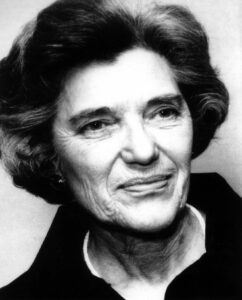 Born in Sparta, Wisconsin, Clarenbach was not only one of the most important women’s rights activists in Wisconsin, but in the country as a whole. Clarenbach earned her PhD in political studies at the University of Wisconsin in Madison, and when she took time away from academics to raise three children, she became active in the League of Women Voters. In 1966, Clarenbach was oneof the original founding members of the National Organization for Women (NOW). She was NOW’s first secretary, and for the first six years of NOW’s existence, meetings were held at the University of Wisconsin in Clarenbach’s faculty offices. In an article from The New York Times, Clarenbach is credited with being a stabilizing and organizational force for NOW, famously saving the napkin on which on which Betty Friedan scribbled “NOW,” effectively sparking the start of the organization. Clarenbach chaired the Wisconsin Governor’s Commission on the Status of Women for 15 years, and was the commission’s first president. Her work on the commission examined gender inequality in state laws, and as a result she helped influence Wisconsin laws on divorce, sexual assault, and pay equity. After the commission was eliminated by governor Lee Dreyfus in 1979, Clarenbach worked
Born in Sparta, Wisconsin, Clarenbach was not only one of the most important women’s rights activists in Wisconsin, but in the country as a whole. Clarenbach earned her PhD in political studies at the University of Wisconsin in Madison, and when she took time away from academics to raise three children, she became active in the League of Women Voters. In 1966, Clarenbach was oneof the original founding members of the National Organization for Women (NOW). She was NOW’s first secretary, and for the first six years of NOW’s existence, meetings were held at the University of Wisconsin in Clarenbach’s faculty offices. In an article from The New York Times, Clarenbach is credited with being a stabilizing and organizational force for NOW, famously saving the napkin on which on which Betty Friedan scribbled “NOW,” effectively sparking the start of the organization. Clarenbach chaired the Wisconsin Governor’s Commission on the Status of Women for 15 years, and was the commission’s first president. Her work on the commission examined gender inequality in state laws, and as a result she helped influence Wisconsin laws on divorce, sexual assault, and pay equity. After the commission was eliminated by governor Lee Dreyfus in 1979, Clarenbach worked
on establishing the Wisconsin Women’s Council in order to replace the commission and continue its work. In an interview conducted after her retirement from the University of Wisconsin in 1988, Clarenbach was asked what she considered the most important advancements women had made in the previous 20 years. On the practice of professors nationwide refusing to accept or treat fairly nontraditional students, those over 22, and women in general, Clarenbach called the professors “slow learners” in regards to understanding what women are capable of. Clarenbach said that the increased credibility of women in all realms was the greatest advancement, as it improved women’s self-esteem and helped them continue the empowerment of all women.
March 22
Sara Bareilles (1979 – )
 Bareilles was born in Eureka, California, the youngest of three children. Bareilles was bullied so badly as a child that she was forced to change schools. Bareilles found a love for music early, and went on to earn a degree in communications from the University of California, Los Angeles. After graduation, Bareilles decided to make it as a singer-songwriter. Her first demo album caught the attention of Epic Records. Four years later, in 2007, Bareilles released her first album, Little Voice. The album was a massive success, earning her two Grammy nominations that year. What endured the most was a single song from the album, “Love Song.” Reporter Crystal Bell interviewing Bareilles called it “An anthem for clever, sassy women everywhere” and asked Bareilles about her views on feminism. Bareilles answered, “I’m not one for seeing amazing, intelligent women being reduced to sex symbols.” Bareilles continued to compose and record songs that spoke of the female experience and resonated strongly with listeners around the world, in particular “Brave” and “King of Everything.” Bareilles’ largest acclaim to date has been as the composer and lyricist of the musical Waitress, adapted from a Keri Russell movie of the same name. The most famous hit, “She Used to Be Mine,” Bareilles wrote after watching the movie for the first time. The main character, pregnant and stuck in an abusive relationship, compelled Bareilles to explain in music how a woman could feel as if she had lost who she used to be before the abuse. Waitress earned Bareilles her first Tony nomination. Asked why Bareilles finds the experiences of women from all walks of life important, she answered, “I need to harness that energy because we are going to take over the world.”
Bareilles was born in Eureka, California, the youngest of three children. Bareilles was bullied so badly as a child that she was forced to change schools. Bareilles found a love for music early, and went on to earn a degree in communications from the University of California, Los Angeles. After graduation, Bareilles decided to make it as a singer-songwriter. Her first demo album caught the attention of Epic Records. Four years later, in 2007, Bareilles released her first album, Little Voice. The album was a massive success, earning her two Grammy nominations that year. What endured the most was a single song from the album, “Love Song.” Reporter Crystal Bell interviewing Bareilles called it “An anthem for clever, sassy women everywhere” and asked Bareilles about her views on feminism. Bareilles answered, “I’m not one for seeing amazing, intelligent women being reduced to sex symbols.” Bareilles continued to compose and record songs that spoke of the female experience and resonated strongly with listeners around the world, in particular “Brave” and “King of Everything.” Bareilles’ largest acclaim to date has been as the composer and lyricist of the musical Waitress, adapted from a Keri Russell movie of the same name. The most famous hit, “She Used to Be Mine,” Bareilles wrote after watching the movie for the first time. The main character, pregnant and stuck in an abusive relationship, compelled Bareilles to explain in music how a woman could feel as if she had lost who she used to be before the abuse. Waitress earned Bareilles her first Tony nomination. Asked why Bareilles finds the experiences of women from all walks of life important, she answered, “I need to harness that energy because we are going to take over the world.”
March 23
Josephine Baker (1906-1975)
 Josephine Baker was a world-renowned Black singer, dancer, and clown. During the 1920s and 1930s, she was the highest-paid entertainer in Europe. Her success in Vaudeville during the Harlem Renaissance propelled her to Paris where her mostly white audiences were entranced by her distinctive dancing, beautiful costumes, and African themes and styles. Throughout Europe she was known as the Black Venus, the Amber Queen, and Pablo Picasso himself called her “the Nefertiti of Now.” Baker’s feminine flamboyance became symbolic of the new sexual freedom of the Jazz Age, and Baker was able to use her career as a platform for social activism. Her immense popularity in Europe during WWII gave Baker the perfect cover for spying. After performing in front of Nazis, Baker would write notes about what she overheard, and pass them to the French Resistance in the form of sheet music containing information written in invisible ink. For her work in France, she was awarded the Croix de Guerre, and the Legion of Honor. Baker also helped alter society’s view of motherhood. Upon finding out she could not have children, Baker created her own multiracial family by adopting 13 children from around the world. After returning to the US, Baker became and activist for the Civil Rights Movement, and was one of the few women allowed to speak alongside Dr. King and Rosa Parks at the March on Washington in 1963. She used this opportunity to talk about racism in America compared to what she experienced in other countries: “You know, friends, that I do not
Josephine Baker was a world-renowned Black singer, dancer, and clown. During the 1920s and 1930s, she was the highest-paid entertainer in Europe. Her success in Vaudeville during the Harlem Renaissance propelled her to Paris where her mostly white audiences were entranced by her distinctive dancing, beautiful costumes, and African themes and styles. Throughout Europe she was known as the Black Venus, the Amber Queen, and Pablo Picasso himself called her “the Nefertiti of Now.” Baker’s feminine flamboyance became symbolic of the new sexual freedom of the Jazz Age, and Baker was able to use her career as a platform for social activism. Her immense popularity in Europe during WWII gave Baker the perfect cover for spying. After performing in front of Nazis, Baker would write notes about what she overheard, and pass them to the French Resistance in the form of sheet music containing information written in invisible ink. For her work in France, she was awarded the Croix de Guerre, and the Legion of Honor. Baker also helped alter society’s view of motherhood. Upon finding out she could not have children, Baker created her own multiracial family by adopting 13 children from around the world. After returning to the US, Baker became and activist for the Civil Rights Movement, and was one of the few women allowed to speak alongside Dr. King and Rosa Parks at the March on Washington in 1963. She used this opportunity to talk about racism in America compared to what she experienced in other countries: “You know, friends, that I do not
lie when I tell you that I have walked into the palaces of kings and queens and into the houses of presidents. And much more. But I could not walk into a hotel in America and get a cup of coffee, and that made me mad.”
March 24
Idle No More (2012 – )
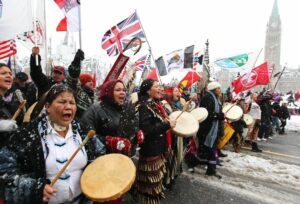 Idle No More is an indigenous activism group founded in Saskatchewan by four women in 2012. Originally formed to oppose Canadian Bill C-45 which removed environmental protection over air and waterways, the group has since become an international activism force, determined to write HERstory. Making use of the fact that a huge number of people own and carry cellphones, Idle No More uses video-worthy flash mobs as a main form of protest. Creating flash mobs through round dancing, an improvisational indigenous dance form that encourages audience participation, Idle No More uses drums made from natural resources currently in danger under proposed Canadian legislation to peacefully revolt against continued colonization. To the surprise of many, Idle No More’s flash mobs were not random. Once started, the flash mobs came one after another across Canada, then crossed into the United States with a flash mob involving hundreds of drummers and dancers at the Mall of America in Minnesota. Flash mobs then extended to American malls across the country, and as far away as the Middle East and New Zealand. Critics of Idle No More’s activism say that their aims are too scattered and that they would do better to try and work within the established governmental systems. Idle No More released a clearly defined set of objectives in 2013, and when criticism did not stop, Idle No More stated succinctly, that their mandate “is to work outside the systems of government.” Of particular concern to indigenous women, Idle No More has been campaigning to have indigenous people involved in the investigations of the thousands of missing and murdered indigenous Canadian women. Alex Wilson, an Idle No More organizer and associate professor at the University of Saskatchewan, has been leading the call for indigenous women to be involved in the investigations of crimes against indigenous women. As former Prime Minister Harper dismissed the basic importance of investigating these crimes, Wilson stated, “This isn’t just some kind of fringe group wanting attention. This is an issue of national importance.” Idle No More’s website clearly documents their goals and activism, including a “Visual Herstory of the Movement.” The organization is also active on Facebook and Twitter.
Idle No More is an indigenous activism group founded in Saskatchewan by four women in 2012. Originally formed to oppose Canadian Bill C-45 which removed environmental protection over air and waterways, the group has since become an international activism force, determined to write HERstory. Making use of the fact that a huge number of people own and carry cellphones, Idle No More uses video-worthy flash mobs as a main form of protest. Creating flash mobs through round dancing, an improvisational indigenous dance form that encourages audience participation, Idle No More uses drums made from natural resources currently in danger under proposed Canadian legislation to peacefully revolt against continued colonization. To the surprise of many, Idle No More’s flash mobs were not random. Once started, the flash mobs came one after another across Canada, then crossed into the United States with a flash mob involving hundreds of drummers and dancers at the Mall of America in Minnesota. Flash mobs then extended to American malls across the country, and as far away as the Middle East and New Zealand. Critics of Idle No More’s activism say that their aims are too scattered and that they would do better to try and work within the established governmental systems. Idle No More released a clearly defined set of objectives in 2013, and when criticism did not stop, Idle No More stated succinctly, that their mandate “is to work outside the systems of government.” Of particular concern to indigenous women, Idle No More has been campaigning to have indigenous people involved in the investigations of the thousands of missing and murdered indigenous Canadian women. Alex Wilson, an Idle No More organizer and associate professor at the University of Saskatchewan, has been leading the call for indigenous women to be involved in the investigations of crimes against indigenous women. As former Prime Minister Harper dismissed the basic importance of investigating these crimes, Wilson stated, “This isn’t just some kind of fringe group wanting attention. This is an issue of national importance.” Idle No More’s website clearly documents their goals and activism, including a “Visual Herstory of the Movement.” The organization is also active on Facebook and Twitter.
March 25
Katharine Hepburn (1907-2003)
 She was called “box office poison” by Hollywood producers, because she just plain refused to act the way Hollywood wanted actresses to behave. She continually, unrelentingly insisted on wearing pants. When the RKO costume department tried to curb this habit by stealing her pants, she walked around the studio in her underwear until her clothing was returned. But after 6 decades of acting, Hepburn proved to be anything but “box office poison,” winning 4 Academy Awards for Best Actress, a record that 20 years after her death still has not been matched. Born in Connecticut, her father was a surgeon and her mother was a leader in the suffrage movement. Her parents highly valued education, as well as independence. She graduated college with a degree in history, but had fallen in love with acting. Before hitting the silver screen, Hepburn spent several years in the theater, on and off Broadway. Even after her big hit, Bringing Up Baby, costarring Cary Grant, the way Hollywood treated her led her to return to Broadway. She starred in the role of Tracy Lord, a role that was written specifically for Hepburn, in the play The Philadelphia Story. On her resounding success, Hepburn herself bought the film rights, returned to Hollywood, and sold the film rights to MGM, on the condition that she would have the starring role. Hepburn went on to win Academy Awards for Guess Who’s Coming to Dinner, The Lion in Winter, and On Golden Pond. Her career, without exception, was one focused on portraying strong women, bucking the sexist expectations of Hollywood, and always being, in any room, the one wearing the pants.
She was called “box office poison” by Hollywood producers, because she just plain refused to act the way Hollywood wanted actresses to behave. She continually, unrelentingly insisted on wearing pants. When the RKO costume department tried to curb this habit by stealing her pants, she walked around the studio in her underwear until her clothing was returned. But after 6 decades of acting, Hepburn proved to be anything but “box office poison,” winning 4 Academy Awards for Best Actress, a record that 20 years after her death still has not been matched. Born in Connecticut, her father was a surgeon and her mother was a leader in the suffrage movement. Her parents highly valued education, as well as independence. She graduated college with a degree in history, but had fallen in love with acting. Before hitting the silver screen, Hepburn spent several years in the theater, on and off Broadway. Even after her big hit, Bringing Up Baby, costarring Cary Grant, the way Hollywood treated her led her to return to Broadway. She starred in the role of Tracy Lord, a role that was written specifically for Hepburn, in the play The Philadelphia Story. On her resounding success, Hepburn herself bought the film rights, returned to Hollywood, and sold the film rights to MGM, on the condition that she would have the starring role. Hepburn went on to win Academy Awards for Guess Who’s Coming to Dinner, The Lion in Winter, and On Golden Pond. Her career, without exception, was one focused on portraying strong women, bucking the sexist expectations of Hollywood, and always being, in any room, the one wearing the pants.
March 26
Josephine Butler (1828 – 1906)
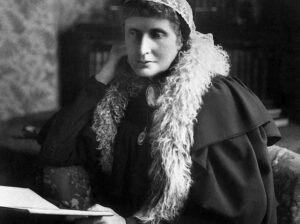 Butler was born in Northumberland, England. Her father was a social reformer and fought for the abolition of the British slave trade. Butler’s second cousin on her father’s side was the British Prime Minister from 1830-1834. She married in 1852, and she and her husband had four children. In 1863, their six year-old daughter Evangeline died after falling from a banister. Butler tried to cope with her grief by throwing herself into social work. Folklore from the time includes the story that after the death of her daughter Butler pulled herself up and went outside in order to find someone who was in a worse situation than she was. What Butler found was the appalling treatment of prostitutes by the British government and the rampant trafficking of children in the sex trade. Butler’s work to improve the treatment of prostitutes involved calling for the removal of the Contagious Diseases Acts. Created to protect public health (though mostly of British army and naval officers), the Contagious Diseases Acts caused forced medical exams of working prostitutes, what Butler called surgical rape. In 1886, she succeeded and the Acts were repealed. During her investigation into the affects of the Acts on prostitutes, Butler discovered that some of the prostitutes were children. She discovered a massive import business of women and children: large-scale human trafficking to fuel the British sex trade. To prove this was a problem, Butler gained the help of the editor of The Pall Mall Gazette, William Thomas Stead. Since Butler was not in a position to portray a man looking for business in world of child prostitution, Stead stepped in and was quickly able to purchase a 13 year-old girl, from the girl’s mother, for only 5 pounds. Butler’s role in women’s history was not only as an advocate and activist; before her death she wrote over 90 books and pamphlets, effectively documenting for history the experience of women and children in the sex trade during her time.
Butler was born in Northumberland, England. Her father was a social reformer and fought for the abolition of the British slave trade. Butler’s second cousin on her father’s side was the British Prime Minister from 1830-1834. She married in 1852, and she and her husband had four children. In 1863, their six year-old daughter Evangeline died after falling from a banister. Butler tried to cope with her grief by throwing herself into social work. Folklore from the time includes the story that after the death of her daughter Butler pulled herself up and went outside in order to find someone who was in a worse situation than she was. What Butler found was the appalling treatment of prostitutes by the British government and the rampant trafficking of children in the sex trade. Butler’s work to improve the treatment of prostitutes involved calling for the removal of the Contagious Diseases Acts. Created to protect public health (though mostly of British army and naval officers), the Contagious Diseases Acts caused forced medical exams of working prostitutes, what Butler called surgical rape. In 1886, she succeeded and the Acts were repealed. During her investigation into the affects of the Acts on prostitutes, Butler discovered that some of the prostitutes were children. She discovered a massive import business of women and children: large-scale human trafficking to fuel the British sex trade. To prove this was a problem, Butler gained the help of the editor of The Pall Mall Gazette, William Thomas Stead. Since Butler was not in a position to portray a man looking for business in world of child prostitution, Stead stepped in and was quickly able to purchase a 13 year-old girl, from the girl’s mother, for only 5 pounds. Butler’s role in women’s history was not only as an advocate and activist; before her death she wrote over 90 books and pamphlets, effectively documenting for history the experience of women and children in the sex trade during her time.
March 27
Virginia Wolff (1882 – 1941)
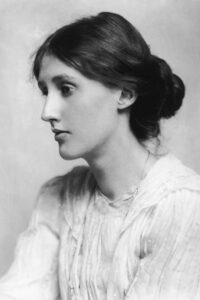 Born into a wealthy London family, Wolff experienced numerous family tragedies early in life. Starting at the age of 13, within 9 years Wolff lost her mother, her half-sister, and her father. The resulting grief caused Wolff to have a nervous breakdown, and she would spend the rest of her life with unsteady mental health. Exposure to bohemian thinking and artistic styles caused Wolff to look at how characters in the same written work could behave differently simply because of their gender. Wolff concluded that female characters experienced the world, whereas male characters had an influence on the world. This revelation caused Wolff to alter how she wrote. In A Room of One’s Own, Wolff expressed that sexism, in the form of poverty, suppression, and male-dominated social norms, is what has kept women out of the history of humankind, not their lack of intelligence. In order for women to carve out their part of history, they first need to carve out their own space, literally a room of their own in which to write. In both To the Lighthouse and Mrs. Dalloway, Wolff adopted a writing style called stream of consciousness to tell stories that reflected how the lives of women are influenced by the thoughts, actions, emotions, and insecurities of the men in their lives. When Hitler rose to power in Germany and war reached England, Wolff’s depression worsened. While she tried to manage her mental health through her writing, she felt inadequate. She committed suicide at the age of 49.
Born into a wealthy London family, Wolff experienced numerous family tragedies early in life. Starting at the age of 13, within 9 years Wolff lost her mother, her half-sister, and her father. The resulting grief caused Wolff to have a nervous breakdown, and she would spend the rest of her life with unsteady mental health. Exposure to bohemian thinking and artistic styles caused Wolff to look at how characters in the same written work could behave differently simply because of their gender. Wolff concluded that female characters experienced the world, whereas male characters had an influence on the world. This revelation caused Wolff to alter how she wrote. In A Room of One’s Own, Wolff expressed that sexism, in the form of poverty, suppression, and male-dominated social norms, is what has kept women out of the history of humankind, not their lack of intelligence. In order for women to carve out their part of history, they first need to carve out their own space, literally a room of their own in which to write. In both To the Lighthouse and Mrs. Dalloway, Wolff adopted a writing style called stream of consciousness to tell stories that reflected how the lives of women are influenced by the thoughts, actions, emotions, and insecurities of the men in their lives. When Hitler rose to power in Germany and war reached England, Wolff’s depression worsened. While she tried to manage her mental health through her writing, she felt inadequate. She committed suicide at the age of 49.
March 28
Pauli Murray (1910-1985)
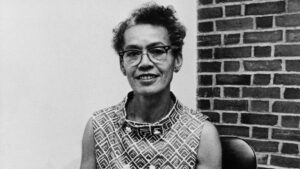 Pauli Murray was a Black human rights activist whose life’s work pointed out the important crossover of racism, sexism, and poverty. Born in Baltimore, Murray’s mother died when she was 3 and her father, grief stricken, was admitted to a mental hospital where he died after being beaten to death by a white guard. Murray taught herself to read, and graduated from high school when she was only 15 years old. America was still firmly under Jim Crow laws, and Murray knew that due to segregation getting into a college would be difficult. In New York, she realized that in addition to racism, many colleges simply would not admit women. She succeeded in graduating from Hunter’s College while constantly dealing with poverty. During part of her college education she slept at a YWCA, and when she lost her waitressing job in 1929 due to the start of the Great Depression, she took odd jobs and attended college in a continual state of malnutrition. Despite earning a law degree, Murray encountered what she would call “Jane Crow” laws, a sexual and racial discrimination practice that kept Black female attorneys from being anything more than legal clerks. Murray’s work on issues of civil and human rights brought her into friendships with Eleanor Roosevelt and Thurgood Marshall. She was known as a strategic activist, developing training practices and field strategies for civil rights activists marching in the streets. With Betty Friedan, Murray helped found the National Organization for Woman. Her life was completely changed after the death of her best friend, and Murray pursued religious studies, becoming the first Black woman in America to become an ordained episcopal priest.
Pauli Murray was a Black human rights activist whose life’s work pointed out the important crossover of racism, sexism, and poverty. Born in Baltimore, Murray’s mother died when she was 3 and her father, grief stricken, was admitted to a mental hospital where he died after being beaten to death by a white guard. Murray taught herself to read, and graduated from high school when she was only 15 years old. America was still firmly under Jim Crow laws, and Murray knew that due to segregation getting into a college would be difficult. In New York, she realized that in addition to racism, many colleges simply would not admit women. She succeeded in graduating from Hunter’s College while constantly dealing with poverty. During part of her college education she slept at a YWCA, and when she lost her waitressing job in 1929 due to the start of the Great Depression, she took odd jobs and attended college in a continual state of malnutrition. Despite earning a law degree, Murray encountered what she would call “Jane Crow” laws, a sexual and racial discrimination practice that kept Black female attorneys from being anything more than legal clerks. Murray’s work on issues of civil and human rights brought her into friendships with Eleanor Roosevelt and Thurgood Marshall. She was known as a strategic activist, developing training practices and field strategies for civil rights activists marching in the streets. With Betty Friedan, Murray helped found the National Organization for Woman. Her life was completely changed after the death of her best friend, and Murray pursued religious studies, becoming the first Black woman in America to become an ordained episcopal priest.
March 29
Mary Ritter Beard (1876-1958)
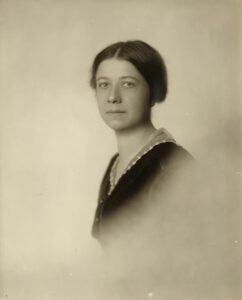 Mary Ritter Beard changed American history by being a female historian. Born in Indianapolis, Beard entered college when only 16 years old. After she married, she and her husband spent two years in England, which at the time was the center of the suffrage movement. Upon returning to America, Beard joined over 5,000 women in the 1913 Women’s Suffrage Parade, during which over 100 women sustained injuries after being attacked by people in the crowd. After American women won the right to vote, Beard campaigned for more legislation to protect working women and mothers. What was extremely important to her was the fact that throughout the entire history of documenting world events in print, women were almost entirely absent, with the exception of an occasional queen being mentioned. Along with her husband, Beard began to write American history books, including American Citizenship, A History of the United States, and The Rise of American Civilization. Beard was one of the first female historians to write factual histories that included women. Her solo works include On Understanding Women, America Through Women’s Eyes, and Women As a Force in History: A Study of Traditions and Realities. Beard’s work provided exceptionally important information about how women have shaped and led history, as well as pointing out that what had previously been written was only half of the story.
Mary Ritter Beard changed American history by being a female historian. Born in Indianapolis, Beard entered college when only 16 years old. After she married, she and her husband spent two years in England, which at the time was the center of the suffrage movement. Upon returning to America, Beard joined over 5,000 women in the 1913 Women’s Suffrage Parade, during which over 100 women sustained injuries after being attacked by people in the crowd. After American women won the right to vote, Beard campaigned for more legislation to protect working women and mothers. What was extremely important to her was the fact that throughout the entire history of documenting world events in print, women were almost entirely absent, with the exception of an occasional queen being mentioned. Along with her husband, Beard began to write American history books, including American Citizenship, A History of the United States, and The Rise of American Civilization. Beard was one of the first female historians to write factual histories that included women. Her solo works include On Understanding Women, America Through Women’s Eyes, and Women As a Force in History: A Study of Traditions and Realities. Beard’s work provided exceptionally important information about how women have shaped and led history, as well as pointing out that what had previously been written was only half of the story.
March 30
Alicia Elliott (1987 or 1988 – )
 Elliott is a Native American Tuscarora author, whose work A Mind Spread Out on the Ground tells the true story of depression, race, sexual assault, and poverty in her family and her indigenous community. The title is a rough translation of the Mohawk word for “depression.” Elliott is a voice spreading the reality of crime against indigenous people in Canada, such as the brutal assault by Canadian Mounted Police of Chief Allan Adam and his wife over an expired license tag. The attack raged on while onlookers begged the police to stop, and the brutality was caught on a dashcam. Elliot’s own childhood was filled with abuse, lice, and murder; her grandfather and uncle were both murdered by white men. Since 2019, Elliott has been writing about a report that was published by Canada’s National Inquiry into Missing and Murdered Indigenous Women and Girls. Completed by over 4 thousand researchers, contributors, and witnesses, the report detailed the ongoing genocide in Canada of indigenous people. Since 1980, between, 1,200-4,000 women, girls and LGBTQIA+ people have gone missing or were murdered. Elliott has stood up against many Canadians who protest the use of the word “genocide,” writing in a Washington Post article that under definitions by the United Nations and the Canadian government itself, what is happening to indigenous women and children is, in fact, genocide. Elliott further countered critics by stating the fact that, at the time of writing, Prime Minister Justin Trudeau’s administration had already received 7 noncompliance orders from the Canadian Human Rights Tribunal. Elliott’s work and writing, while experiencing her own depression, is providing an essential voice for the current state of women and girls in Canada: they are being murdered at a rate 3 to 12 times higher than non-indigenous people.
Elliott is a Native American Tuscarora author, whose work A Mind Spread Out on the Ground tells the true story of depression, race, sexual assault, and poverty in her family and her indigenous community. The title is a rough translation of the Mohawk word for “depression.” Elliott is a voice spreading the reality of crime against indigenous people in Canada, such as the brutal assault by Canadian Mounted Police of Chief Allan Adam and his wife over an expired license tag. The attack raged on while onlookers begged the police to stop, and the brutality was caught on a dashcam. Elliot’s own childhood was filled with abuse, lice, and murder; her grandfather and uncle were both murdered by white men. Since 2019, Elliott has been writing about a report that was published by Canada’s National Inquiry into Missing and Murdered Indigenous Women and Girls. Completed by over 4 thousand researchers, contributors, and witnesses, the report detailed the ongoing genocide in Canada of indigenous people. Since 1980, between, 1,200-4,000 women, girls and LGBTQIA+ people have gone missing or were murdered. Elliott has stood up against many Canadians who protest the use of the word “genocide,” writing in a Washington Post article that under definitions by the United Nations and the Canadian government itself, what is happening to indigenous women and children is, in fact, genocide. Elliott further countered critics by stating the fact that, at the time of writing, Prime Minister Justin Trudeau’s administration had already received 7 noncompliance orders from the Canadian Human Rights Tribunal. Elliott’s work and writing, while experiencing her own depression, is providing an essential voice for the current state of women and girls in Canada: they are being murdered at a rate 3 to 12 times higher than non-indigenous people.
March 31
The National Women’s History Museum (1996 – )
 Founded in 1996, The National Women’s History Museum is an online museum, available through their own website and social media accounts on Facebook, Instagram, and Twitter. The goal in creating the museum was to not only fill in the voids in American history, but to give the experiences of past women a place to be valued. The museum’s social media accounts are very active and allow anyone with an internet connection the opportunity to learn about women’s history from the mouths of women themselves: all of the officers of the museum’s board of directors are women, and 18 of the 19 members are female. The museum provides for free extensive research resources as well as materials specifically designed to be used in classrooms to teach women’s history. Their online presence also contains biographies of women in history, including a section with recordings of the women themselves speaking about their own experiences. The museum is also supported through The National Women’s History Museum National Coalition, a collective of over 60 national organizations that help provide insight and experience, and work together to empower women, seek gender equality, and get out the stories of what women have really done in the history of this nation.
Founded in 1996, The National Women’s History Museum is an online museum, available through their own website and social media accounts on Facebook, Instagram, and Twitter. The goal in creating the museum was to not only fill in the voids in American history, but to give the experiences of past women a place to be valued. The museum’s social media accounts are very active and allow anyone with an internet connection the opportunity to learn about women’s history from the mouths of women themselves: all of the officers of the museum’s board of directors are women, and 18 of the 19 members are female. The museum provides for free extensive research resources as well as materials specifically designed to be used in classrooms to teach women’s history. Their online presence also contains biographies of women in history, including a section with recordings of the women themselves speaking about their own experiences. The museum is also supported through The National Women’s History Museum National Coalition, a collective of over 60 national organizations that help provide insight and experience, and work together to empower women, seek gender equality, and get out the stories of what women have really done in the history of this nation.
____________________________________________________________
Women’s History Month 2022
Each year, AAUW La Crosse members research and write daily biographies of women for the month of March, centered around the theme of the year. As set by the National Women’s History Alliance, the theme of Women’s History Month 2022 ,“Providing Healing, Promoting Hope,” is both a tribute to the ceaseless work of caregivers and frontline workers during this ongoing pandemic and also a recognition of the thousands of ways that women of all cultures have provided both healing and hope throughout history. We hope that these introductions to notable women past and present, inspire you to learn more about them.
Monday, March 1, 2022
Amanda Gorman (1998-present)
Monday, March 2, 2022
Helen Rodriguez Trias (1929-2021)
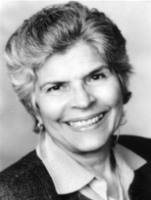 Helen Rodriguez Trias spent her first 10 years in Puerto Rico. She returned to Puerto Rico to attend college and graduated in 1957. Her childhood experiences with racism in New York helped her choose her career in Medicine: “It combined the things I loved the most, science and people.”
Helen Rodriguez Trias spent her first 10 years in Puerto Rico. She returned to Puerto Rico to attend college and graduated in 1957. Her childhood experiences with racism in New York helped her choose her career in Medicine: “It combined the things I loved the most, science and people.”
She earned her medical degree in 1960 and gave birth to her fourth child that same year. Her specialization in Pediatrics, women’s health and reproductive rights — plus her political activism in both New Your and Puerto Rico — were aspired by her mother, aunts and sisters, who “faced so many restraints in their struggle to flower and reach their potential”
She established an infant health clinic in San Juan, where she reduced infant mortality by 50% in its first year. She served as medical director for New York State Department of Health AIDS Institute, and worked as director of the Pediatrics Department at Lincoln Hospital in New York. Dr. Rodriguez Trias was the first Latina president of the American Public Health Association, founded the Committee to End Sterilization Abuse (testifying before Congress in 1979), and was awarded a Presidential Citizens Medal by President Clinton in January 2001. She died of cancer in December 2001. Dr. Rodriguez Trias was born in 1929 in New York.
— Sponsored by AAUW La Crosse, Researched by Pam Thiel.
Monday, March 3, 2022
Alice Green (1883-1982)
 Alice Green graduated from the University of Wisconsin in 1905. At 33, she moved to La Crosse and worked as a high school English teacher. In 1921, she married businessman Frank Hixon and quit her teaching job. She became involved with many community organizations like the YMCA and the La Crosse Hospital Association. Hixon was also one of the 48 founding members of the La Crosse branch of the American Association of University Women (AAUW) in 1922. This is interesting because it is the centennial year of that organization. Hixon then founded the La Crosse League of Women Voters in 1924, four-years after passage of the 19th amendment.
Alice Green graduated from the University of Wisconsin in 1905. At 33, she moved to La Crosse and worked as a high school English teacher. In 1921, she married businessman Frank Hixon and quit her teaching job. She became involved with many community organizations like the YMCA and the La Crosse Hospital Association. Hixon was also one of the 48 founding members of the La Crosse branch of the American Association of University Women (AAUW) in 1922. This is interesting because it is the centennial year of that organization. Hixon then founded the La Crosse League of Women Voters in 1924, four-years after passage of the 19th amendment.
The Hixons moved to Lake Forest, Illinois in 1925 to be closer to family, where she continued her volunteer work, but they made visits back to La Crosse and Frankʼs family home. Frank died in 1931 and Alice returned briefly to La Crosse. In 1962, she donated the Hixon House to the La Crosse County Historical Society and it is listed on the National Register of Historical Places. Through her life of service, Hixon brought hope to her community. Alice Green was born in Fond du Lac, Wisconsin.
— Sponsored by AAUW La Crosse, Researched by Pam Thiel.
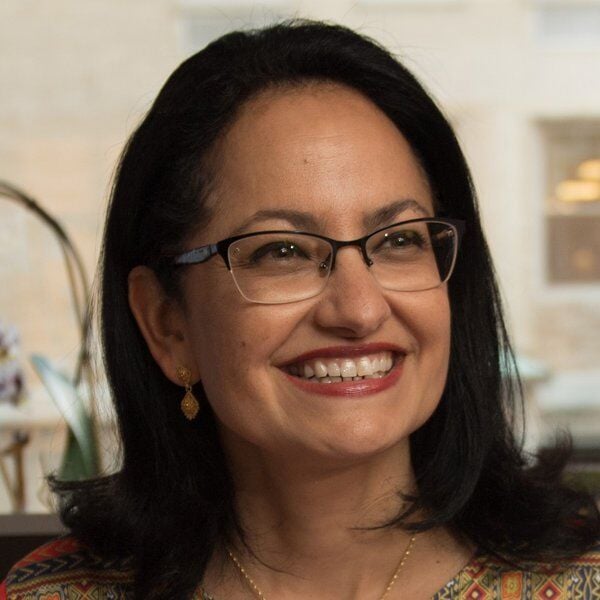
Dr. Nawal Nour is the chair of the Department of Obstetrics and Gynecology at Brigham and Women’s Hospital. She holds the Kate Macy Ladd Professorship at Harvard Medical School. Nour established the world-renowned African Women’s Health Center, which provides appropriate holistic health and outreach programs to the African community in Boston. Nour was honored as a 2003 MacArthur Foundation Fellow for creating the country’s only center of its kind that focuses on both physical and emotional needs of women who have had or undergone female genital mutilation or cutting (FGM/C). She has also published several articles related to women’s health, including “HIV and Pregnancy in Resource-Poor Settings.” Dr. Nour was born in the Sudan and raised in Egypt and England. She came to the United States to attend Brown University. She received her medical degree from Harvard Medical School, completed an OB-GYN residency in Obstetrics and Gynecology at the Brigham and Women’s Hospital and an MPH at Harvard School of Public Health. Dr. Nour has developed and studied defibulation, a surgical process to alleviate some of the negative effects FGM/C has on women’s health.
— Sponsored by AAUW La Crosse, Researched by Erica Koonmen.
Saturday, March 5, 2022
Hadiyah-Nicole Green, Ph.D. (1978 – )
 Hadiyah-Nicole Green became an orphan at age 4 and went to live with her aunt and uncle Ora Lee and General Lee Smith in St. Louis, Missouri. When she was an adult both her aunt and uncle struggled with and finally succumbed to cancer, planting the spark in Green to steer her considerable science aptitude toward improving treatments for the disease. She earned M.S. and Ph.D. degrees in physics from the University of Alabma at Birmingham. While a student Green began researching the concept of targeting cancer cells with lasers, a treatment without side effects. In 2013 she joined the faculty at Tuskegee University and was recruited away in 2016 by the Morehouse University School of Medicine. She was awarded a $1.1 million grant from Veterans Affairs to further develop targeted cancer therapies, nanoparticle fabrication, and antibody conjugation. The Ora Lee Smith Cancer Research Foundation, named in memory of her aunt, was created by Green to help fund human clinical trials. Ebony Magazine selected Green as one of the 100 most influential African American leaders in the United States.
Hadiyah-Nicole Green became an orphan at age 4 and went to live with her aunt and uncle Ora Lee and General Lee Smith in St. Louis, Missouri. When she was an adult both her aunt and uncle struggled with and finally succumbed to cancer, planting the spark in Green to steer her considerable science aptitude toward improving treatments for the disease. She earned M.S. and Ph.D. degrees in physics from the University of Alabma at Birmingham. While a student Green began researching the concept of targeting cancer cells with lasers, a treatment without side effects. In 2013 she joined the faculty at Tuskegee University and was recruited away in 2016 by the Morehouse University School of Medicine. She was awarded a $1.1 million grant from Veterans Affairs to further develop targeted cancer therapies, nanoparticle fabrication, and antibody conjugation. The Ora Lee Smith Cancer Research Foundation, named in memory of her aunt, was created by Green to help fund human clinical trials. Ebony Magazine selected Green as one of the 100 most influential African American leaders in the United States.
— Sponsored by AAUW La Crosse, Researched by Jan Eriksen
Sunday, March 6, 2022
Dr. Susan La Flesche Picotte (1865–1915)
Susan La Flesche was born on the Omaha reservation in Northeastern Nebraska to Chief Joseph La Flesche (Iron Eyes) and his wife, Mary (One Woman). Her father encouraged his people to pursue education. He sent Susan to the Elizabeth Institution for young ladies in New Jersey when she was 14, and she returned home at 17 to teach for two years at the Quaker Mission School on the reservation. Dr. La Flesche’s passion for healthcare was sparked when as a young child, she witnessed a Native American woman die because a white local doctor would not treat her. She returned to the East Coast to resume her education at Hampton Institute, one of the first schools of higher education for non-white students. While she was there, the resident physician, Martha Waldron, encouraged her to enroll at her own alma mater, the Women’s Medical College of Pennsylvania (WMCP). Dr. La Flesche graduated from WMCP at the top of her class in 1889, did a one-year internship in Philadelphia, and then returned to Omaha where she was responsible for the health care of 1200 people. After marrying Henry Picotte in 1894 and moving with him to Bancroft, NE, Dr. La Flesche started a private practice serving non- white and white patients. In 1906, she lobbied for prohibition of alcohol on the reservation. Two years before she died in 1915, she opened a hospital in the reservation town of Walthill, NE, where the hospital is now a museum.
— Sponsored by AAUW La Crosse, Researched by Ann Brice.
Monday, March 7, 2022
Constance Baker Motley (1921-2005)
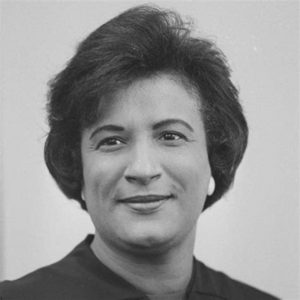 Civil rights lawyer Constance Baker Motley was born in Connecticut on September 14th, 1921, to emigrants from the West Indies. She became an avid reader at the integrated public schools in New Haven, CT, and decided as a teenager to become a lawyer. While working as a maid to raise the funds of college tuition, she impressed a wealthy white man, who offered to pay for her college. She began at Fisk University in Tennesee, and transferred in 1943 to New York University where she earned a BS in Economics. The following year, she was the first African-American woman ever accepted at Columbia Law School – and here she met Thurgood Marshall and began to work for the NAACP’s Legal Defense Fund. She had a major role in the 1954 Brown vs. Board of Education lawsuit, prosecuted the University of Mississippi’s refusal to admit James Meredith, and defended the protestors arrested during the Freedom Rides. In 1964, she was the woman elected to New York State Senate, and in 1966, she became the first African-American woman appointed to a federal judgeship when President Lyndon B. Johnson appointed her to the US District Court. Judge Motley died in September of 2005, age 84. A new biography by Tomiko Brown-Nagin, a professor of Constitutional Law at Harvard, was published this year.
Civil rights lawyer Constance Baker Motley was born in Connecticut on September 14th, 1921, to emigrants from the West Indies. She became an avid reader at the integrated public schools in New Haven, CT, and decided as a teenager to become a lawyer. While working as a maid to raise the funds of college tuition, she impressed a wealthy white man, who offered to pay for her college. She began at Fisk University in Tennesee, and transferred in 1943 to New York University where she earned a BS in Economics. The following year, she was the first African-American woman ever accepted at Columbia Law School – and here she met Thurgood Marshall and began to work for the NAACP’s Legal Defense Fund. She had a major role in the 1954 Brown vs. Board of Education lawsuit, prosecuted the University of Mississippi’s refusal to admit James Meredith, and defended the protestors arrested during the Freedom Rides. In 1964, she was the woman elected to New York State Senate, and in 1966, she became the first African-American woman appointed to a federal judgeship when President Lyndon B. Johnson appointed her to the US District Court. Judge Motley died in September of 2005, age 84. A new biography by Tomiko Brown-Nagin, a professor of Constitutional Law at Harvard, was published this year.
— Sponsored by AAUW La Crosse, Researched by Annie Allen-Wyman
Tuesday, March 8, 2022
Arden Eversmeyer (1931-)
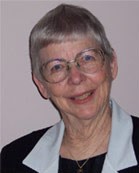 Eversmeyer was born in Stevens Point, Wisconsin and her family moved to Dallas, Texas in 1943 where she finished high school. She realized her love for women while a teenager. Because this was a time when women suspected of being lesbians were routinely expelled from college and fired from jobs, she led a very closeted life. Eversmeyer attended Texas State College for Women and graduated in 1951. She worked in Houston public schools for much of her over 30-year career as an educator and counselor. In 1952, she met Tommie Russum, her life partner of 33 years. After her partner’s death in 1985, Eversmeyer began a life of service and activism, acting as a docent with Houston Zoological Gardens, an officer in the Civic Club, and serving on the Houston Area Agency on Ageing. In 1987, Eversmeyer founded Lesbians Over the Age of Fifty (LOAF). She was also a leader in Older Lesbians Organizing for Change (OLOC). In 1998, realizing that many of her friends were reaching the end of their lives, she founded the Old Lesbian Oral Herstory Project (OLOHP) to document and honor their lives. Eversmeyer said, “You don’t have to climb Mount Everest to be interesting. Everyone has an amazing story.”
Eversmeyer was born in Stevens Point, Wisconsin and her family moved to Dallas, Texas in 1943 where she finished high school. She realized her love for women while a teenager. Because this was a time when women suspected of being lesbians were routinely expelled from college and fired from jobs, she led a very closeted life. Eversmeyer attended Texas State College for Women and graduated in 1951. She worked in Houston public schools for much of her over 30-year career as an educator and counselor. In 1952, she met Tommie Russum, her life partner of 33 years. After her partner’s death in 1985, Eversmeyer began a life of service and activism, acting as a docent with Houston Zoological Gardens, an officer in the Civic Club, and serving on the Houston Area Agency on Ageing. In 1987, Eversmeyer founded Lesbians Over the Age of Fifty (LOAF). She was also a leader in Older Lesbians Organizing for Change (OLOC). In 1998, realizing that many of her friends were reaching the end of their lives, she founded the Old Lesbian Oral Herstory Project (OLOHP) to document and honor their lives. Eversmeyer said, “You don’t have to climb Mount Everest to be interesting. Everyone has an amazing story.”
— Sponsored by AAUW La Crosse, Researched by Pam Thiel.
Wednesday, March 9, 2022
Dr. Serena Auñón-Chancellor (1976-present)
 Dr. Serena M. Auñón was selected by NASA in 2009. Board certified in Internal and Aerospace Medicine. She recently served as Flight Engineer on the International Space Station for Expeditions 56 and 57 (June 6 through December 19, 2018). During her 197 days in space, she carried out numerous experiments that helped the scientific understanding of the world grow. She is also certified as an International Space Station CAPCOM and served as the lead Capcom for the SpaceX-4 and SpaceX-8 cargo resupply missions. In June 2012, Dr. Auñón-Chancellor piloted a DeepWorker 2000 submersible as part of the NASA/NOAA NEEMO 16 underwater exploration mission off Key Largo, Florida. In July 2015, she participated as an aquanaut in the NEEMO 20 crew. Dr. Auñón-Chancellor’s research is concerned with the medical implications of space radiation exposure, including computer modelling of the radiation environment of a crewed orbiting spacecraft. Now, Dr. Auñón-Chancellor spends most of her time handling medical issues for both the ISS Operations branch and Commercial Crew Branch. Born April 9, 1976 in Indianapolis, Indiana, Auñón’s father is Dr. Jorge Auñón, a Cuban exile who arrived in the United States in 1960; her mother is Margaret Auñón, who writes murder mysteries. Dr. Serena Auñón-Chancellor stands out as a remarkable woman who contributes to the scientific community as both a surgeon and an astronaut.
Dr. Serena M. Auñón was selected by NASA in 2009. Board certified in Internal and Aerospace Medicine. She recently served as Flight Engineer on the International Space Station for Expeditions 56 and 57 (June 6 through December 19, 2018). During her 197 days in space, she carried out numerous experiments that helped the scientific understanding of the world grow. She is also certified as an International Space Station CAPCOM and served as the lead Capcom for the SpaceX-4 and SpaceX-8 cargo resupply missions. In June 2012, Dr. Auñón-Chancellor piloted a DeepWorker 2000 submersible as part of the NASA/NOAA NEEMO 16 underwater exploration mission off Key Largo, Florida. In July 2015, she participated as an aquanaut in the NEEMO 20 crew. Dr. Auñón-Chancellor’s research is concerned with the medical implications of space radiation exposure, including computer modelling of the radiation environment of a crewed orbiting spacecraft. Now, Dr. Auñón-Chancellor spends most of her time handling medical issues for both the ISS Operations branch and Commercial Crew Branch. Born April 9, 1976 in Indianapolis, Indiana, Auñón’s father is Dr. Jorge Auñón, a Cuban exile who arrived in the United States in 1960; her mother is Margaret Auñón, who writes murder mysteries. Dr. Serena Auñón-Chancellor stands out as a remarkable woman who contributes to the scientific community as both a surgeon and an astronaut.
— Sponsored by AAUW La Crosse, Researched by Erica Koonmen.
Thursday, March 10, 2022
Gertrude B. Elion (1918–1999)
Gertrude Belle Elion was born in New York City to Eastern European immigrant parents. She was a science prodigy who was admitted to Hunter College at age 15 and graduated summa cum laude with a degree in chemistry at 19. Many laboratories would not hire women chemists, so she took various jobs including secretary and teacher, then earned her M.S. in chemistry from New York University. She began work on a doctorate, but finances prevented her from completing the degree. It was the Great Depression so fellowships were scarce and usually went to men. Later, World War II created labor shortages in the pharmaceutical industry and Elion was hired as a research assistant to Dr. George Hitchings at Burroughs Wellcome (now GlaxoSmithKlein). There she developed drugs to combat childhood leukemia and to prevent the body from rejecting transplanted organs. Later, she invented a compound to fight gout and an antiviral agent used to treat herpes virus infections. In 1988 she was awarded the Nobel Prize in Medicine, which she shared with mentor Dr. Hitchings. Elion’s name appears on 45 patents in medicine and she was awarded 23 honorary degrees.
— Sponsored by AAUW La Crosse, Researched by Jan Eriksen
Friday, March 11, 2022
Flossie Wong-Staal, Ph.D. (1947–2020)
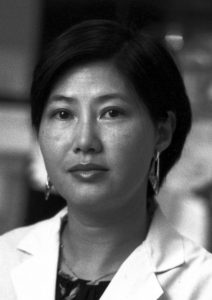 Flossie Wong-Staal was born Wong Yee Ching in Guangzhou, China in 1946. Her family fled to Hong Kong in 1952 after the Communist Revolution. During her time in Hong Kong, Wong-Staal attended the Maryknoll Convent School where she excelled in science. Her teachers there as well as her family encouraged her to pursue her education in the United States. When her teachers suggested she change her name to something English, her father suggested “Flossie” after a massive typhoon that had recently struck the area. She received her B.S. in bacteriology and her PhD in molecular biology from UCLA. She did her post-doc work at University of California San Diego, and after that, went to work for Robert Gallo at the NIH. There she began her research into retroviruses, and soon after, became the first researcher to clone HIV. In 1990, Wong-Staal was recruited to the University of California San Diego where she started the Center for AIDS research. Her work there led to new treatments for HIV/AIDS patients. In 2002, she joined Immusol, a biopharmaceutical company she founded with her second husband, where she focused on therapies for Hepatitis C. The Institute for Scientific Information named Wong-Staal “the top woman scientist of the 1980s”and in 2019, she was inducted into the National Women’s Hall of Fame.
Flossie Wong-Staal was born Wong Yee Ching in Guangzhou, China in 1946. Her family fled to Hong Kong in 1952 after the Communist Revolution. During her time in Hong Kong, Wong-Staal attended the Maryknoll Convent School where she excelled in science. Her teachers there as well as her family encouraged her to pursue her education in the United States. When her teachers suggested she change her name to something English, her father suggested “Flossie” after a massive typhoon that had recently struck the area. She received her B.S. in bacteriology and her PhD in molecular biology from UCLA. She did her post-doc work at University of California San Diego, and after that, went to work for Robert Gallo at the NIH. There she began her research into retroviruses, and soon after, became the first researcher to clone HIV. In 1990, Wong-Staal was recruited to the University of California San Diego where she started the Center for AIDS research. Her work there led to new treatments for HIV/AIDS patients. In 2002, she joined Immusol, a biopharmaceutical company she founded with her second husband, where she focused on therapies for Hepatitis C. The Institute for Scientific Information named Wong-Staal “the top woman scientist of the 1980s”and in 2019, she was inducted into the National Women’s Hall of Fame.
— Sponsored by AAUW La Crosse, Researched by Ann Brice.
Saturday, March 12
Jewel Plummer Cobb, Ph.D. (1924-2017)
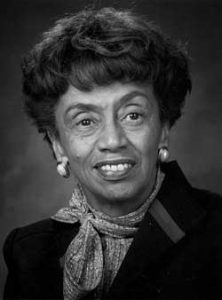 Jewel Plummer Cobb saw and instigated many changes in her life. Born on January 17, 1924, in Chicago, to a physician father (the first African-American to earn an MD from Cornell University, and a mother (the daughter of a freed slave) who taught high school phyed and owned a dance studio, she was always encouraged to learn more! “Fundamental to encouraging more women to consider careers in the sciences is the eradication of the notion that proficiency in mathematics is a gender-linked characteristic,” she wrote. She earned a BA in Biology in 1944 at Talladega College in Talladega, AL, after two years at the University of Michigan where she endured racism. In 1947, she earned a MS and, in 1950, a PhD in cell physiology, both at New York University. In 1952, she founded the first tissue culture facility at the University of Illinois Medical School. In the 1960’s, she was a biology professor at Sarah Lawrence College, and in 1969, she became the dean of zoology at Connecticut College. Her research into melanin pigmentation and how it protects us from UV radiation continued, and later, she and Jane Wright, with innovative collaboration, proved the efficacy of methotrexate in treating many types of cancers, including childhood leukemia. She accepted the president position at California State University – Fullerton in 1982 and retired in 1990. In 1993, she received a Lifetime Achievement Award from the National Academy of Sciences. She died on January 1st, 2017, at age 92, survived by one son and a granddaughter.
Jewel Plummer Cobb saw and instigated many changes in her life. Born on January 17, 1924, in Chicago, to a physician father (the first African-American to earn an MD from Cornell University, and a mother (the daughter of a freed slave) who taught high school phyed and owned a dance studio, she was always encouraged to learn more! “Fundamental to encouraging more women to consider careers in the sciences is the eradication of the notion that proficiency in mathematics is a gender-linked characteristic,” she wrote. She earned a BA in Biology in 1944 at Talladega College in Talladega, AL, after two years at the University of Michigan where she endured racism. In 1947, she earned a MS and, in 1950, a PhD in cell physiology, both at New York University. In 1952, she founded the first tissue culture facility at the University of Illinois Medical School. In the 1960’s, she was a biology professor at Sarah Lawrence College, and in 1969, she became the dean of zoology at Connecticut College. Her research into melanin pigmentation and how it protects us from UV radiation continued, and later, she and Jane Wright, with innovative collaboration, proved the efficacy of methotrexate in treating many types of cancers, including childhood leukemia. She accepted the president position at California State University – Fullerton in 1982 and retired in 1990. In 1993, she received a Lifetime Achievement Award from the National Academy of Sciences. She died on January 1st, 2017, at age 92, survived by one son and a granddaughter.
— Sponsored by AAUW La Crosse, Researched by Annie Allen-Wyman
Sunday, March 13
Annie Dodge Wauneka (1910-1997)
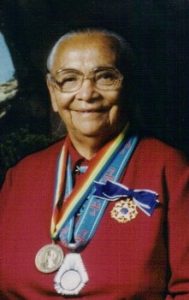 Wauneka was born in a Navajo hogan to Henry and K’eehabah Dodge. She was raised by her father, who was the first Chair of the Navajo Tribal Council and a wealthy rancher. Wauneka attended a government-run school in Fort Defiance, AZ when the 1918 Spanish influenza hit. She recovered from a mild case and helped care for other patients. This led to her interest in public health. She continued her education at an Indian school in Albuquerque, NM where she met and then married George Wauneka. Wauneka recognized the way to improve the health of her Nation was through their government. In 1951, she ran and was elected as the second woman to the Tribal Council where she served as chair of the Health and Welfare Committee. Wauneka received a degree in public health from the University of AZ and was an activist on issues like tuberculosis, infant mortality, and alcoholism. Wauneka also served on advisory boards to the US Surgeon General and the Public Health Service, and the NM Committee on Aging. She received the Presidential Medal of Freedom and the Navajo Nation’s Medal of Honor. Wauneka dedicated her life to helping Navajos utilize modern medicine without sacrificing traditional values.
Wauneka was born in a Navajo hogan to Henry and K’eehabah Dodge. She was raised by her father, who was the first Chair of the Navajo Tribal Council and a wealthy rancher. Wauneka attended a government-run school in Fort Defiance, AZ when the 1918 Spanish influenza hit. She recovered from a mild case and helped care for other patients. This led to her interest in public health. She continued her education at an Indian school in Albuquerque, NM where she met and then married George Wauneka. Wauneka recognized the way to improve the health of her Nation was through their government. In 1951, she ran and was elected as the second woman to the Tribal Council where she served as chair of the Health and Welfare Committee. Wauneka received a degree in public health from the University of AZ and was an activist on issues like tuberculosis, infant mortality, and alcoholism. Wauneka also served on advisory boards to the US Surgeon General and the Public Health Service, and the NM Committee on Aging. She received the Presidential Medal of Freedom and the Navajo Nation’s Medal of Honor. Wauneka dedicated her life to helping Navajos utilize modern medicine without sacrificing traditional values.
Jaida Im was working as a health care provider when she was horrified to discover that modern day slavery in the form of human trafficking was occuring where she lived. She is the Founder and Executive Director of Freedom House. Based in the San Francisco Bay Area, the non-profit organization brings hope, restoration, and a new life to survivors of human trafficking. In August 2010, Freedom House opened The Monarch, the first residential shelter and long-term aftercare program of its kind in Northern California for adult female survivors of human trafficking. In addition to shelter, it provides victims with medical care, psychological assistance and other services. In 2013, Jaida was presented with the San Francisco Modern Day Abolitionist Award. The Nest, its group home for girls ages 12 to 17, opened in 2014. Sponsored by AAUW La Crosse, Researched by Erica Koonmen.
Tuesday, March 15
Betty White (1922-2021)
Although Betty White is best known for seven decades of acting (the 2014 edition of Guinness World Records named her as the woman entertainer with the longest career ever), her lifelong devotion to the health and welfare of animals is also legendary. She was raised in a household in which her animal-loving parents often fostered homeless companion animals. In the 1960s White began working with the Los Angeles Zoo to help upgrade the conditions of animal enclosures. She was also national spokesperson and Board President for the Morris Animal Foundation. Through the foundation she sponsored more than 30 animal studies to improve the health of cats dogs horses and multiple species of wildlife. White paid approximately $70,000 following Hurricane Katrina in 2005 to evacuate and relocate penguins and sea otters from the Audubon Aquarium in New Orleans to the Monterey Bay Aquarium in California. In 2010 she established the Betty White Wildlife Fund in response to the Deepwater Horizon Oil spill in the Gulf of Mexico. Even in death she brought in funds to help animals. The “Betty White Challenge” was begun on social media urging $5 donations to local animal welfare organizations on what would have been White’s 100th birthday, January 17, 2022. The challenge raised $12.7 million for shelters and rescuers all over the United States.
— Sponsored by AAUW La Crosse, Researched by Jan Eriksen
Patricia Era Bath was born in Harlem and was encouraged by her parents to pursue education and travel. At 16, Dr. Bath was one of a few students to attend a cancer research workshop sponsored by the NSF. The program director was so impressed by her work, he included it in a scientific journal article. Dr. Bath graduated from high school in two years, and then attended Hunter College for her bachelor’s degree, followed by Howard University for a medical degree. She completed a fellowship for ophthalmology at Columbia University and then worked as an intern at both Harlem Hospital and Columbia University. Dr. Bath noticed that half the patients at the Harlem eye clinic were blind in contrast to hardly any of the patients at the Columbia clinic being blind. After conducting an epidemiological study,
Dr. Bath concluded that the high prevalence of blindness in Blacks was because of lack of access to ophthalmologic care. Dr. Bath founded the discipline of community ophthalmology which focused on outreach to traditionally underserved populations. It is estimated that this outreach has saved the sight of thousands of people. In 1977, Dr. Bath and three others formed the American Institute for the Prevention of Blindness, and as its director, traveled widely offering services to those in industrial and developing countries.
— Sponsored by AAUW La Crosse, Researched by Ann Brice.
Thursday, March 17, 2022
Dorothea Lynde Dix (1802-1877)
Dorothea Lynde Dix was born on April 4, 1802, in Maine – and where she was born was just a happenstance. Her father was a minister who moved often to lead different congregations. At the age of 12, Dorothea ran away to her grandmother’s house in Boston, and later lived with an aunt. Curious and blessed with strong academic skills, she opened a private school for girls, that offered free evening classes for poor children, when she was only 14! Dorothea was busy for almost 20 years teaching and writing children’s books, including Moral Tales for Young Persons. In 1841, she began a class at the local jail and discovered appalling conditions there: there was no heat, poor food, and criminals, the mentally ill, and children were all confined together. For the next two decades, Dorothea visited all the state legislatures and several governments in Europe, advocating for both better jail and prison conditions, but also for treatment programs for the mentally ill. The Civil War interrupted these efforts. Dorothea volunteered to the Superintendent of US Army Nurses, and was ordered to set up first aid stations and field hospitals, hire nurses, and order supplies – she is one of our most famous nurses! After the War, she returned to activism, but retired in 1881, discouraged by state funding limits and skepticism about mental health treatments. Dorothea died in Boston on July 17, 1877.
— Sponsored by AAUW La Crosse, Researched by Annie Allen-Wyman
Dr. Murillo-Rhode was born in Panama and immigrated to the US in 1945. She received her nursing diploma in 1948 and began her career in San Antonio, TX, but found few Hispanic nurses serving their community. This set her on a goal to improve the lives of Hispanic medical staff and enhance healthcare in underrepresented communities. She received a BA in psychiatric mental health nursing from Columbia University and then Master and Doctorate degrees at New York University. In the 1970s, Dr. Murillo-Rhode held a federal position in Washington, DC reviewing grants, and found no Latina nurses in academic settings in research or public policy and was motivated to make change. She founded the National Association of Hispanic Nurses in 1975 to assist Latinas in securing their education and to provide service to their community. Dr. Murillo-Rhode was always active in nursing and served on the faculty and then as Dean of Nursing at SUNY. Her many honors include being named as a permanent representative to UNICEF for the International Federation of Business and Professional Women and was named a Fellow and “Living Legend” by the American Nursing Association.
— Sponsored by AAUW La Crosse, Researched by Pam Thiel.
Saturday, March 19, 2022
Dr Eliza Ann Grier (1864-1902)
Eliza Grier, an emancipated slave, believed she could be most helpful to other African Americans by getting a medical education. To pay for her medical education, she alternated every year of her studies with a year of picking cotton. It took her seven years to graduate. In 1898 she became the first African American woman licensed to practice medicine in the state of Georgia, and although she was plagued with financial difficulties throughout her education and her career, she fought tenaciously for her right to earn a living as a woman doctor. She was born in 1864, during the Civil War (1861-65), in Mecklenburg County, North Carolina, to Emily and George Washington Grier. In 1884 she enrolled in the Normal Department at Fisk University in Nashville, Tennessee. She worked her way through school, alternating years between course work and jobs, yet remained active in extracurricular activities, including serving in 1890 as president of the Young Ladies Lyceum. After graduating from Fisk in 1891, Dr. Grier moved to Augusta,Georgia, where she taught at the Haines Normal and Industrial Institute. Soon after arriving at Haines, Dr. Grier was accepted into the Woman’s Medical College in Pennsylvania (later part of Drexel University College of Medicine), where she began her studies in 1893. Dr. Grier, despite overwhelming difficulties, remained determined and engaged in opportunities to improve health and hygiene standards for African Americans in the rural South. She fell ill in 1901, just three years after opening her practice, and was unable to work. She moved to Albany, Georgia, where her brother Richard Edgar Grier, also a physician, worked. She died in 1902, just five years after beginning to practice medicine, and was buried in Charlotte, North Carolina.
— Sponsored by AAUW La Crosse, Researched by Erica Koonmen.
Sunday, March 20, 2022
Dr. Mona Hanna-Attisha (1976-present)
Dr. Mona Hanna-Attisha was born in the United Kingdom to Iraqi parents. The family emigrated to the United States when she was four years old. She grew up in Royal Oak, Michigan and received her medical degree from the Michigan State University College of Human Medicine. Later Hanna-Attisha also earned a master’s degree in public health from the University of Michigan. She is a pediatrician at Hurley Medical Center in Flint. Hanna-Attisha is best known for being the whistleblower who discovered the high levels of lead in Flint’s water. Lead has been proven to be a neurotoxin which impacts cognition and development in children resulting in such effects as lower IQ and attention deficit disorder. Her research findings regarding the water were initially rejected by city and state officials but Hanna-Attisha persisted, enlisting the help of other experts. When state health epidemiologists confirmed her data, county commissioners declared a state of emergency in Flint. The city switched its source of water and, over time, replaced the city’s pipes which were damaged by the toxic water. Hanna-Attisha has since written a book about her experience and has received numerous accolades, including Time magazine’s 100 Most Influential People in the World. She is married to Dr. Elliott Attisha, also a pediatrician. The couple has two daughters.
— Sponsored by AAUW La Crosse, Researched by Jan Eriksen
Alice Ball was an African American chemist who developed the “Ball Method”, the most effective treatment for leprosy during the early 20th century. Alice Augusta Ball was born on July 24, 1892 in Seattle, Washington to Laura, a photographer, and James P. Ball, Jr., a lawyer. Her family was middle-class and well off . After earning undergraduate degrees in pharmaceutical chemistry (1912) and pharmacy (1914) from the University of Washington, Alice Ball transferred to the College of Hawaii (now known as the University of Hawaii) and became the very first African American and the very first woman to graduate with a M.S. degree in chemistry in 1915. She was offered a teaching and research position there and, at 23, became the institution’s very first woman chemistry instructor. Tragically, Ball died on December 31, 1916, at the young age of 24. She had become ill during her research and returned to Seattle for treatment a few months before her death. During her brief lifetime, she did not get to see the full impact of her discovery. Arthur L. Dean, a chemist and later the president of the University of Hawaii, stole her work, published the findings, and began producing the treatment. Dean published the findings without giving Ball credit and named the technique after himself. Unfortunately, it was commonplace for men to take the credit of women’s discoveries and Ball fell victim to this practice. In 1922, six years after her death, Dr. Harry T. Hollmann published a paper giving Ball the proper credit she deserved. Even so, Ball remained largely forgotten from scientific history until recently. On November 6, 2020, a satellite named after her (ÑuSat 9 or “Alice”, COSPAR 2020-079A) was launched into space.
— Sponsored by AAUW La Crosse, Researched by Erica Koonmen.
Florence Nightingale was born in Florence, Italy to an affluent British family. From a young age she was interested in philanthropy, and by the time she was 16, she believed nursing was her divine purpose. Despite her parents’ insistence that she marry a man of means, Nightingale enrolled as a nursing school in Lutheran Hospital of Pastor Fliedner in Kaiserwerth, Germany. She returned to London in the early 1850s and after taking a job at a hospital in Middlesex, she was promoted to superintendent in just a year. This was during the time of a cholera outbreak, and Nightingale made it a priority to optimize sanitation to improve patient outcomes. In the fall of 1854, a year after the Crimean War broke out, Nightingale was asked to assemble a team of nurses and report to the war front. She was shocked at the filth of the medical units there, and immediately got to work improving the conditions. This resulted in the death rate of the hospital being reduced by two-thirds. Because she spent many nights walking through the hospital checking on patients, she was nicknamed “The Lady with the Lamp” and “The Angel of Crimea.” Nightingale went on to use data from her experiences to help create the Royal Commission into the health of the Army, and was the first female member of the Royal Statistical Society.
— Sponsored by AAUW La Crosse, Researched by Ann Brice.
Wednesday, March 23
Junko Tabei (1939-2016)
Growing up poor in the 1930’s in Japan, Junko Tabei (Tah-Bay) began to climb mountains – as high as she could go without special boots, pikes, and oxygen. While in college, she joined a climbing club, and after graduating, she founded the first Japanese mountaineering club for women, inspired by the critics who said she was too weak to reach the summit or only climbed to find a husband! Only 4’9″ she climbed Mt. Fuji, Annapurna, and the Matterhorn. In 1975, sponsored by a Japanese newspaper and Nippon TV, she led the first female-only group to the top of Mt. Everest. The budget for 15 climbers was very small and they made their own goose-down-filled sleeping bags and waterproof gloves, and made goods to sell at fundraisers. At 9,300 feet above sea level, an avalanche buried the camp on the Lhotse face, but no one was killed. Junko and most of the team continued, and on May 16, 1975, she became the first woman to reach the peak of Mt. Everest. She preferred to be called the 36th person to climb the tallest mountain in the world. In 1992, she reached the peak of Puncak Jaya, in Indonesia, and became the first woman to complete the Seven Summits – the highest peaks on each of the seven continents! In 2002, she returned to university to study ecology and issues related to protecting wild places like mountaintops. She died in 2016 of cancer and left a legacy of profound human achievement, environmental activism, and ensuring that women will always be welcomed and respected in all of their endeavors.
— Sponsored by AAUW La Crosse, Researched by Annie Allen-Wyman
Thursday, March 24, 2022
Kizzmekia Corbett, Ph.D. (1986-present)
Kizzmekia “Kizzy” Shanta Corbett (born January 26, 1986) is an American viral immunologist. She is an Assistant Professor of Immunology and Infectious Diseases at Harvard T.H. Chan School of Public Health and the Shutzer Assistant Professor at the Harvard Radcliffe Institute since June 2021. In 2014, Dr. Corbett received a PhD in microbiology and immunology from the University of North Carolina at Chapel Hill. For her doctoral work, Dr.Corbett worked in Sri Lanka to study the role of human antibodies in dengue virus pathogenesis. Appointed to the Vaccine Research Center in 2014, Dr. Corbett was the scientific lead of the VRC’s COVID-19 Team, with research efforts aimed at COVID-19 vaccines. In February 2021, Dr. Corbett was highlighted in the Time’s “Time100 Next” list under the category of Innovators, with a profile written by Dr.Anthony Fauci. Combining her research goals with her knack for mentorship, Dr. Corbett invests much of her time in underserved communities as an advocator of STEM education and vaccine awareness. Dr. Corbett has called for the public to be cautious and respectful of one another during the COVID- 19 pandemic, explaining that regular hand washing and sneezing into one’s elbow can help to minimize the spread of the virus. She has also emphasized that we should not stigmatize people who may be from areas where the virus started.
— Sponsored by AAUW La Crosse, Researched by Erica Koonmen.
Friday, March 25, 2022
Dr. Mary Steichen Calderone (1904-1998)
Dr. Calderone graduated from Vassar College with a degree in chemistry and married actor W. Lon Martin. The couple had two daughters prior to divorcing in 1933. Following the break-up of her marriage and the death of daughter Nell of pneumonia at age 8, Calderone was ready for a new direction in her life. At age 30 she returned to school, earning an M.D. degree from the University of Rochester followed by a master’s degree in public health from Columbia University. She married Dr. Frank Calderone in 1941; they had two daughters.
Dr. Mary Calderone’s first post medical school position was as a school doctor in Long Island. There she saw first-hand the misinformation about reproduction and sexuality among children and adolescents. In 1953 she became medical director of the Planned Parenthood Federation of America. In that capacity she convinced the American Public Health Association to include sex education in public schools and the American Medical Association to overturn its long-held policy of forbidding physicians to discuss contraception with their patients. In 1964 Dr. Calderone left Planned Parenthood to co- found the Sex Information and Education Council of the United States and become its first director. She received many awards and honors for her work, including induction into the National Women’s Hall of Fame in 1998.
— Sponsored by AAUW La Crosse, Researched by Jan Eriksen
Biddy Mason was born enslaved in Mississippi. Given the name Bridget without a surname at birth, she was later nicknamed Biddy, and was owned by slaveowners in Georgia and South Carolina before being sold to her last owner, Robert Marion Smith, a Mississippi Mormon. When Biddy was 30, she walked 1700 miles behind the 300-wagon caravan that Smith led to what would eventually become Salt Lake City so he could establish a Mormon community there. As she followed the caravan, Biddy was responsible for setting up and breaking down camp, herding cattle, cooking, acting as a midwife, and taking care of her three daughters, 10, 4, and a newborn. In 1851, Smith moved his family to California, even though slavery was illegal there. After 5 years of being enslaved in California, Biddy sued Smith for her freedom and in early 1856, her freedom was granted. She took the surname Mason from the name of the San Bernadino mayor. She moved her family to L.A., continued working as a midwife and a nurse, and bought land in what is now downtown L.A. Mason organized the first A.M.E. church and used her approximately $3 million in wealth to become a philanthropist to the L.A. Community.
— Sponsored by AAUW La Crosse, Researched by Ann Brice.
Born in Pittsburgh in 1873, Agatha Tiegel Hanson lost her hearing and her sight in one eye at age 7 after a case of spinal meningitis. Because she could no longer hear and enjoy music, she immersed herself in the rhythms of poetry and did her best in public schools, a Catholic “academy,” and the Western Pennsylvania School for the Deaf. When she was 15, she entered Gallaudet (the school admitted females for the first time in 1887), and graduated, valedictorian, in 1893. Miss Tiegel moved to Minnesota, where she taught for 6 years at the School for the Deaf in Faribault and met Olof Hanson, an Episcopal minister. They moved to Washington after their marriage and raised their three daughters there. Mrs. Hanson was active in the deaf community, serving at all levels of various organizations — and singing hymns at the church every Sunday in sign language. Writing in the years before women were allowed to vote in this country, she addressed the “noble hunger” to learn, and that she “resented that there might be any question of the right, the God-given right, of my sisters and myself to take our places in the sun.”. Our Places in the Sun is the title of her biography, written by Kathy Jankowski. Agatha Tiegel Hanson died in 1959 at age 86 after a long illness. Gallaudet University named the Plaza and Dining Hall after her, established Deaf Women’s Studies courses, and produced The Feather, a movie about her life.
— Sponsored by AAUW La Crosse, Researched by Annie Allen-Wyman.
Monday, March 28, 2022
Dr. Katherine Ruiz de Luzuriaga
Dr. Luzuriaga is an internationally-renowned physician-scientist who uses scientific investigation to improve human health. Her laboratory research focuses on understanding how viruses, including human immunodeficiency virus (HIV) and Epstein Barr virus (EBV), establish persistent viral infections in children. Dr. Luzuriaga completed undergraduate and master’s degrees in Biochemistry at the Massachusetts Institute of Technology (MIT) and her medical degree at Tufts University School of Medicine in 1984. Dr. Luzuriaga was born in Bacolod in the Philippine province of Negros Occidental and grew up in Manila. The second of six children, she comes from a large family that has remained in the Visayas. “My father is an engineer, so is my grandfather. From them, I got my love of math and science,” she has said. Her mother was a nurse, who had a love for volunteer work. In 2013, Dr. Luzuriaga was named by Time magazine one of the 100 most influential people in the world, along with two colleagues, Dr. Hannah Gay and Dr. Deborah Persaud, for functionally curing a newborn of AIDS. Dr. Luzuriaga, who is director of the U-Mass Center for Clinical and Translational Science, has been at the forefront of pediatric HIV/AIDS research for many years and has been recognized for her collaborative research on the transmission of HIV from pregnant women to their newborns during birth, a leading cause of the rapid spread of HIV in developing countries.
— Sponsored by AAUW La Crosse, Researched by Erica Koonmen.
Tuesday, March 29, 2022
Dr. Anandibai Gopalrao Joshi (1865–1887)
Anandibai Gopalrao Joshi was the first female Indian physician. She was also the first woman in India to complete her studies in western medicine from the United States. Dr. Joshi was born and raised in a Marathi Chitpavan Brahmin family. As was the practice at that time and due to pressure from her mother, she was married at the age of nine to Gopalrao Joshi, a widower almost twenty years her senior. He was a progressive thinker, and, unusually for that time, supported education for women. At the age of fourteen, Anandibai gave birth to a boy, but the child lived only for a total of ten days due to lack of medical care. This proved to be a turning point in her life and inspired her to become a physician. Her husband encouraged her to study medicine. While the Joshi couple was in Calcutta, Dr. Joshi’s health was declining. She suffered from weakness, constant headaches, occasional fever, and sometimes breathlessness. Her husabnd decided to send Anandibai by herself to America for her medical studies despite her poor health. Though apprehensive, Gopalrao convinced her to set an example for other women by pursuing higher education. Dr. Joshi began her medical training at age 19. In America, her health worsened because of the cold weather and unfamiliar diet. She contracted tuberculosis. Nevertheless, she graduated with an MD in March 1886; the topic of her thesis was “Obstetrics among the Aryan Hindoos.” In late 1886, Dr. Joshi returned to India, receiving a grand welcome. Dr. Joshi died of tuberculosis early the next year on 26 February 1887 before turning 22. While Anandibai Gopalrao Joshi did not get to practice medicine as she had hoped for, she paved the way for millions of women after her to pursue medicine. Her death was mourned immensely by the entire nation. A crater on Venus has also been named after her, called ‘Joshee’.
— Sponsored by AAUW La Crosse, Researched by Erica Koonmen.
Wednesday, March 30, 2022
Dr. Marcella Nunez-Smith
You may know Dr. Marcella Nunez-Smith as the co-chair of President Joe Biden’s Covid-19 Advisory Board. Marcella Nunez- Smith was born in Saint Thomas, US Virgin Islands, and attended the All Saints Cathedral School, an Episcopal college preparatory school, there on the island. She has lived on the American “mainland” for most of her life, and today is about 35 years old. She earned her Bachelor’s degree at Swarthmore College, her medical degree at Thomas Jefferson University in Philadelphia, and then pursued a Masters in Health Science degree at Yale. Dr. Nunez-Smith’s professional career has included teaching, advocacy, and research. As a professor of internal medicine at Yale, she is also a director of the Center for Community Engagement and Health Equity, and the founder of the Equity Research and Innovation Center (ERIC) at Yale School of Medicine. During one of the many online/broadcast presentations about pandemic management, she said, “I’m proud to go to work with leaders who are deeply committed to science and to centering equity in our response to the pandemic. It is a shared value, deeply woven into all of the work that we do.”
— Sponsored by AAUW La Crosse, Researched by Annie Allen-Wyman
Elizabeth Peratrovich was an American civil rights activist, Grand President of the Alaska Native Sisterhood, and member of the Tlingit nation who worked for equality on behalf of Alaska Natives. Elizabeth Wanamaker was born on July 4, 1911, in Petersburg, Alaska, with the Tlingit name of Ḵaaxx gal.aat (“person who packs for themselves”). She was orphaned at a young age and adopted by Andrew and Jean Wanamaker, who gave her the name Elizabeth Jean. On December 15, 1931, Elizabeth Wanemaker married Roy Scott Peratrovich (1908– 1989), also a Tlingit, of mixed Native and Serb descent. The Peratroviches were concerned about racial discrimination and inequities. Looking for greater access to lawmakers who could effect change, they moved to Juneau, and even there found extensive social and racial discrimination against Alaska Native people. With the help of others, Elizabeth and Roy Peratrovich drafted and introduced an anti-discrimination bill in 1941, though it would fail to pass, they would persevere. In 1945, representing the Alaska Native Brotherhood/Sisterhood, they would again bring an anti-discrimination bill before the Alaska Senate. Last to testify, Elizabeth Peratrovich took to the floor to deliver an impassioned speech, calling for equal treatment for Indigenous peoples. The Senate voted 11–5 for House Resolution 14, providing “full and equal accommodations, facilities, and privileges to all citizens in places of public accommodations within the jurisdiction of the Territory of Alaska; to provide penalties for violation”. Alaska thus became the first territory or state to end “Jim Crow” since 18 states banned discrimination in public accommodations in the three decades following the Civil War. Elizabeth Peratrovich died after battling breast cancer, on December 1, 1958, at the age of 47. In February 2020, the 75th anniversary of the bill she fought for, the U.S. Mint released five million $1 coins commemorating the Anti-Discrimination Law of 1945. The “tails” side features a portrait of Elizabeth Peratrovich, the name of the legislation, and the symbol of the Tlingit Raven descent group, of which she was a member.
— Sponsored by AAUW La Crosse, Researched by Erica Koonmen
WOMAN” HISTORY MONTH – 2021
ENTRIES FOR THEME: Valiant Women Of The Vote: Refusing To Be Silenced
Laura Cornelius Kellogg (1880-1947)
The theme for 2021 National Women’s History Month captures the spirit of these challenging times. Since most 2020 women’s suffrage centennial celebrations were curtailed, the National Women’s History Alliance (www.nwhp.org) is extending the annual theme for 2021 to “Valiant Women of the Vote: Refusing to Be Silenced.” This theme continues to observe the 100th anniversary of women’s right to vote. This year we also recognize several men who not only provided support for women’s suffrage but often impacted directly on the passage of the 19th Amendment.
As we celebrate the fact that Congress passed the 19th Amendment in 1919, and 36 states ratified it by August of 1920, it is important to realize that the 19th Amendment did not guarantee ALL women in the United States the right to vote. In 1924 the Indian Citizenship Act deemed Native Americans U.S. citizens, but it still was up to states to decide if indigenous people could vote. In 1934 the Magnuson Act granted Chinese in America the right to become citizens and therefore to vote. And in 1962 New Mexico became the last state to enfranchise Native Americans. In 1965 the Voting Rights Act eliminated many of the restrictions that had excluded African Americans and Native Americans from voting, such as poll taxes, literacy tests, and intimidation. However, the struggle for voting rights continues.
The daily stories you’ll see throughout March were written by AAUW La Crosse members Jan Eriksen, Erica Koonmen, Betty Kruck and Pam Thiel, unless otherwise credited.
Monday, March 1, 2021
Laura Cornelius Kellogg (1880-1947)
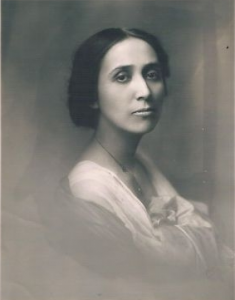
Laura Cornelius was born on the Oneida Indian Reservation at Green Bay. Instead of being sent off to a Bureau of Indian Affairs boarding school in the East, as were most of her peers, she was educated at Grafton Hall, sponsored by the Episcopal Diocese of Fond du Lac. She then taught briefly at the Oneida Indian Boarding School in Oneida, Wisconsin and at the Sherman Institute in Riverside, California. From 1898 through 1910 Laura Cornelius traveled for two years in Europe and took classes at Stanford University, Barnard College, the New York School of Philanthropy, Cornell University, and the University of Wisconsin. While in Europe she admired the Garden city movement of urban planning in England, Germany, and France: it planted the seed of her Lolomi Plan of Native American living, cooperation, division of labor, and self-governance. In 1912 Laura Cornelius married Orrin Kellogg, an attorney of Seneca ancestry. Laura Cornelius Kellogg wrote Our Democracy and the American Indian: A Presentation of the Indian Situation as It Is Today and was a founding member of the Society of American Indians. She and her husband fought for Native American land claims.
SPONSORED BY AAUW LA CROSSE
Tuesday, March 2, 2021
Zona Gale 1874–1938
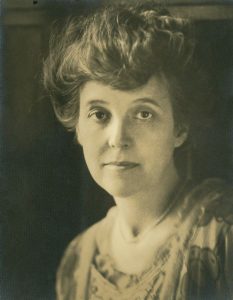
Pulitzer Prize-winning author, regional writer, and political activist, Gale was born on August 26, 1874 in Portage, Wisconsin to Charles Franklin and Eliza Beers Gale. She graduated from the University of Wisconsin in 1895 and became one of the first female newspaper reporters in Milwaukee, working for the Evening Wisconsin and then the Milwaukee Journal. She received her master’s degree “https://www.britannica.com/topic/master-degree“ in literature from UW in 1899. Gale became the first woman to win the Pulitzer Prize for drama in 1921. She was a suffragist and an activist. She supported animal rights, a vegetarian diet, and prohibition of alcohol and tobacco. Of all her interests in reform, Zona Gale devoted her greatest efforts to promoting pacifism and women’s rights. She was an active member of the “https://en.wikipedia.org/wiki/National_Woman’s_Party” National Woman’s Party, and she lobbied extensively for the 1921 “https://en.wikipedia.org/w/index.php?title=Wisconsin_Equal_Rights_Law&action=edit&redlink=1 “Wisconsin Equal Rights Law. In 1921, she attended the founding meeting (in New York) of the Lucy Stone League and became a member of its executive committee. Gale’s feminism was manifested in her fiction, which featured female characters attempting to escape from the narrow conventional definitions of womanhood in A Daughter of the Morning (1917), Birth(1918), Miss Lulu Bett (1920), and Faint Perfume (1923). Gale’s activism on behalf of women was her way to solve politically a problem she returned to repeatedly in her novels: women’s frustration at their lack of opportunities. After the vote was won in 1920, she helped draft the Wisconsin Equal Rights Law in 1923. She sat on the board of regents of the University of Wisconsin in 1923–29. She died on December 27.
SPONSORED BY AAUW LA CROSSE
Wednesday, March 3, 2021
Septima Poinsette Clark (1898-1987)
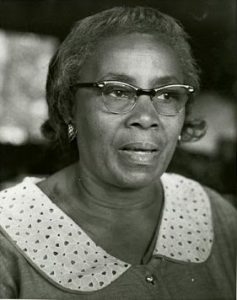
Septima Poinsette Clark was born in Charleston, South Carolina in 1898. Her father was a former slave and her mother was a laundress. Since Charleston had no high schools for Blacks, she earned money to attend Avery Institute, a private school for African Americans. Upon graduation in 1916, Poinsette became an instructor in rural South Carolina because Charleston did not hire African Americans. Poinsette made a career of teaching, including 18-years in Columbia and 9 in Charleston, and became a civil rights activist that started in 1919 when she joined the National Association for the Advancement of Colored People (NAACP). Her first political victory was to get signatures to change Charleston’s policy of not hiring Black teachers. In 1945, she helped the NAACP win a case on equal pay for white and Black teachers. South Carolina made it illegal for public employees to belong to civil rights groups in 1956. Clark refused to renounce NAACP and lost her teaching job. After her firing, Clark took a position in Tennessee at the interracial Highlander Folk School, a grassroots education center dedicated to social justice. Clark taught adults basic literacy skills and citizenship rights. After Highlander closed in 1961, the Southern Christian Leadership Conference (SCLC) established the Citizen Education Program based on Clark’s model. Grassroots citizenship education became the cornerstone of the Civil Rights Movement, and Clark was called its “Mother” by Martin Luther King. She was instrumental in founding nearly 900 citizenship schools to teach African Americans literacy, which ultimately helped them vote.
SPONSORED BY AAUW LA CROSSE
Thursday, March 4, 2021
Jovita Idar (1885-1946)
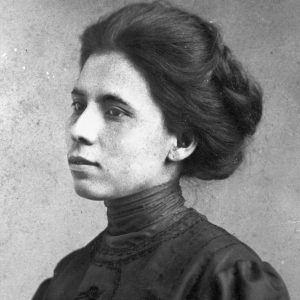
Jovita Idar was a strong and influential advocate for Mexican-Americans and Mexican Immigrants civil rights and social justice. She grew up in Laredo, Texas where she earned a teaching certificate. Frustrated by the inadequately equipped and poor conditions of the segregated schools, she left teaching to focus on journalism as a way to expose the injustices and inequalities of Mexican-Americans in Texas and the U.S. She worked first at her father’s newspaper, and then at other newspapers as a journalist and then as an editor. She formed her own weekly newspaper in 1916. She denounced the dismal social, educational, and economic conditions of Mexican-American workers. She wrote positive articles in a number of Spanish-language newspapers about women’s suffrage activities, and encouraged women to reject a degraded status. When an editorial angered the military and the Texas Rangers, she famously stood at the door of the newspaper office and denied the Texas Rangers entrance. However, the Rangers returned when she was not there and ransacked the office, destroying the printing press. Jovita continued to write and promote educational, civil and voting rights.
SPONSORED BY AAUW LA CROSSE
Friday, March 5. 2021
James Densmore (1820-1889)
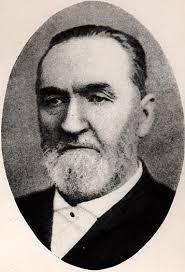
James Densmore was one of the limited number of men who openly championed the cause of women’s suffrage. He managed the Oshkosh True Democrat, a newspaper whose policy was to support women’s right to vote. In 1849 Densmore challenged the editor of the Milwaukee Sentinel to indicate why women should not have a voice in making laws. Densmore said he expected to be called a “visionary fanatic” for taking such as stand. The Sentinel replied May 31 in a tongue-in-cheek manner, “Women are confessedly angels, and angels do not vote.” Densmore is probably best well-known, however, as an inventor who helped contribute to improving the typewriter at a machine shop in Milwaukee. He suggested alleviating the jamming problem by splitting up the order of commonly used letters on the keyboard. This concept was later refined by one of his business partners, Christopher Sholes, and became the QWERTY key layout that we use today.
SPONSORED BY AAUW LA CROSSE
Saturday, March 6, 2021
Virginia Louisa Minor (1824-1894)
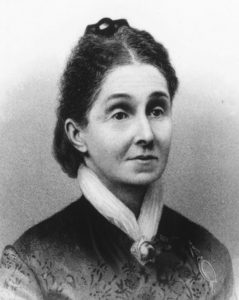
Virginia Minor was born in Virginia where she was home schooled and attended an academy for young ladies. In 1843, she married Francis Minor, a lawyer. They briefly lived in Mississippi and prior to the Civil War settled on a farm in St. Louis. Virginia took an active role in founding the Woman’s Suffrage Association of Missouri in 1867 and became its first president. She later aligned herself with the National Women’s Suffrage Association. At their convention in 1869, she stated that she had the right to vote based on the newly passed Fourteenth Amendment and the Association adopted her argument. Virginia tried to register to vote in 1872, but was denied because she was a woman. She and her husband then sued the registrar. The case made its way to the US Supreme Court where her husband argued the case. The Supreme Court unanimously held that the Constitution does not confer the right of suffrage upon anyone. This was a blow to the woman suffrage movement and they had to develop new strategies.
SPONSORED BY AAUW LA CROSSE
Sunday, March 7, 2021
Marie Louise Bottineau Baldwin (1863-1952)
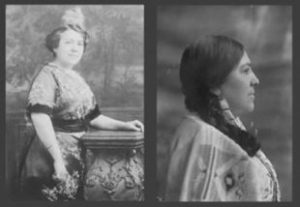
Born in 1863 in North Dakota, Marie Louise Bottineau grew up in a politically active Native American family. She had a short-lived marriage to a white businessman named Fred Baldwin. In the early 1890’s, as a clerk in her father’s law office, she moved with him to Washington, D.C., to fight for treaty rights for their tribe, the Turtle Mountain Chippewa Nation. In 1904, President Theodore Roosevelt appointed Marie as a clerk in the Office of Indian Affairs (OIA). She celebrated and promoted Native identity at a time when the government promoted assimilation, and wore traditional dress in her personnel photo taken in 1911. In 1912, at the age of 49, she started night classes at Washington College of Law (Washington D.C.). She completed her law degree, in just two years, instead of the usual three. In 1914, she was the school’s first woman of color and Indigenous woman graduate. At her graduation, a reporter asked if she was a suffragist, she laughing replied, “Did you ever know that the Indian women were among the first suffragists, and that they exercised the right of recall? The trouble in this Indian question is that it is not the Indian who needs to be educated so constantly up to the white man, but that the white man needs to be educated to the Indian” She helped found the Society of American Indians (SAI) but also continued to work at the OIA which caused conflicts and personal tensions. She became involved in the feminist movement and marched proudly with white female lawyers and college women in the 1913 suffrage parade in Washington D.C. Changing politics and priorities within the OAI led to Marie disengaging from the group in 1919. She retired from the Office of Indian Affairs in 1932, and died in 1952.
SPONSORED BY AAUW LA CROSSE
Monday, March 8. 2021
Rachel S. Jastrow (1865-1926)
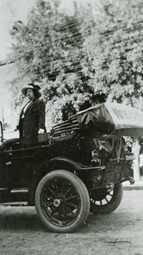
Rachel Szold Jastrow was one of the leaders of the women’s suffrage movement in Madison, Wisconsin. Rachel moved to Madison from Baltimore in 1896. She enrolled in classes at UW-Madison and joined a number of organizations including the Madison German Society, Women’s Club, and Civics Club. Rachel strongly supported women’s suffrage, and would travel around giving speeches from an open vehicle emblazoned with a Votes for Women banner on the back. She served as liaison to the state legislature for the Wisconsin Women’s Suffrage Association. In 1930 Rachel’s name was one of fifteen included on a bronze plaque at the Washington offices of the League of Women Voters. The names on the plaque represented the most active in ratification of suffrage in Wisconsin. Rachel Jastrow is also recognized as founder of the Madison chapter of Hadassah and was instrumental in the establishment of one of Madison’s first synagogues. She also organized a hospital association that eventually became the first hospital built in the city, Madison General hospital. Two books translated into English, one from French and one from German, are attributed to Rachel Jastrow.
SPONSORED BY AAUW LA CROSSE
Tuesday, March 9, 2021
Mary Ann Shadd Cary (1823 –1893)

Mary Ann Shadd was born in Wilmington, Delaware, on October 9, 1823. Since Delaware prohibited Black education, the Shadds moved to Pennsylvania where Mary Ann attended a Quaker boarding school until 1839. Shadd’s family was involved in the Underground Railroad. After the passage of the Fugitive Slave Act of 1850, her family moved to Canada. In 1853, Shadd founded Canada’s first-antislavery newspaper, The Provincial Freeman, becoming the first Black woman in North America to edit and helm a newspaper. In 1856, while living in Canada, she met and married Thomas F. Cary. They had two children. He died only a few years later. Shadd Cary returned to the United States during the American Civil War and recruited soldiers for the Union. She taught in Washington D.C. public schools until, in 1869, she became the first Black woman to enroll in Howard University’s law school. Shadd Cary was one of four women, the only Black woman in her class, who received a Bachelor of Law degree in June 1883. She continued to lecture, focusing on women’s rights and the women’s suffrage movement.
Shadd Cary joined the National Woman Suffrage Association (NWSA), working alongside Susan B. Anthony and Elizabeth Cady Stanton, testifying before the Judiciary Committee of the House of Representatives and tried to register to vote alongside sixty-three other women, unsuccessfully. In 1878, Shadd Cary spoke at the NWSA convention, having petitioned to add the signatures of 94 Black women in to the NWSA’s Declaration of the Rights of Women of the United States. Shadd Cary was one of the most outspoken and articulate female activists of her day, and promoted equality for all people. She died in 1893.
SPONSORED BY AAUW LA CROSSE
Wednesday, March 10, 2021
Clara Elizabeth Chan Lee (1886-1993)
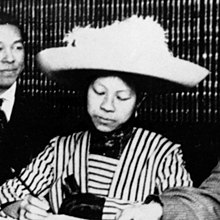
Clara Elizabeth Chan Lee became the first Chinese-American woman to register to vote in the United States. It was November 1911 in Alameda, California. The state had passed Proposition 4 (or Senate Constitutional Amendment Number 8) in October, granting California women the right to vote for the first time. Lee went on to found the Chinese Women’s Jeleab (Self-Reliance) Association in 1913. The organization’s primary purpose was education and independence for women. Lee joined the Chinese YWCA, established in 1916, as well as the Fidelis Coterie, a philanthropic Chinese women’s club. She also became a member of the International Institute, which continues to help immigrants, refugees, and their families join and contribute to the community today. Clara Lee kept on with her volunteer work until her death at age 106, just 16 days short of her 107th birthday.
SPONSORED BY AAUW LA CROSSE
Thursday, March 11, 2021
Amelia Boynton Robinson (1911-2015)

Amelia Boynton was a champion of voting and civil rights for African Americans. She began holding voter registration drives at a young age because of the few Blacks who were able to overcome the literacy and other restrictions for voting in Selma, Alabama. In 1964 she was the first African American woman to run for a seat in Congress from Alabama. She invited Dr. Martin Luther King to Selma to assist with voting and civil rights and together they planned the 1965 march from Selma to Montgomery. The march, later known as “Bloody Sunday” resulted in bloodshed on the Edmund Fitzgerald Bridge where marchers were beaten by state troopers and county police. Amelia Boynton was attacked and her bloodied unconscious body was photographed and shown around the world. Newspaper coverage prompted the signing of the Voters Rights Act of 1965. She was honored by Barack Obama at the State of Union address in 2015. At the age of 103, she held hands with Barack Obama as they moved across the Edmund Fitzgerald Bridge with Congressman John Lewis and others to commemorate the 50th anniversary of the “Bloody Sunday” march. She authored the book “Bridge Over Jordan”.
SPONSORED BY AAUW LA CROSSE
Friday, March 12, 2021
The African American Literary and Debating Society in the La Crosse Area
African American women in La Crosse came together before the Civil War to create an organization that improved their community. In the late 1800’s, they formed the African American Literary and Debating Society, one of over 400 such groups across the country. These organizations formed for self-growth and oratory. Likewise, white women nationally formed similar clubs. Literary and Debating Societies expanded their focus to take on civic issues such as suffrage. African American women were intersectional in their approach to suffrage. They also focused on anti-lynching, injustice, and educational opportunities. African American female reformers understood that in addition to their sex, their race significantly affected their rights and available opportunities. White suffrage organizations ignored these challenges that African American women faced. They chose not to integrate issues of race into their campaigns causing a schism between these two groups. The African American women suffragists wanted the vote for women and to ensure that African American men could also vote. African American men had won the right to vote in 1870, but had since been disfranchised. Black professional women and property owners in La Crosse founded the Literary and Debating Society–women like Penelope Birney, Mary and Lydia Moss, and Elizabeth Burt. The next generation of members included Emma Moss, Emma Smith, Ellen Shivers and Elizabeth Loving. Being a member of the club helped give African American women greater social standing in their community. As the African American population in La Crosse dwindled, the African American Literary and Debating Society became inactive.
— Research provided by Rebecca Mormann. Photo of Penelope Birney, provided Courtesy of the La Crosse Public Library Archives.
SPONSORED BY AAUW LA CROSSE;
Saturday, March 13, 2021
Susette La Flesche Tibbles (Bright Eyes) 1854-1903
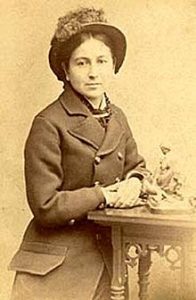
Susette La Flesche Tibbles worked tirelessly for Native American rights through her speaking, writing, interpreting and advocacy. She was the daughter of the last recognized chief of the Omaha tribe, born the year that the tribe moved from their hunting grounds to a reservation in northeastern Nebraska. She attended a mission boarding school on the reservation, and then a private school in New Jersey. She excelled at writing and returned to the reservation to teach. After viewing the horrible conditions of the Ponca tribe, she began writing and speaking about injustices experienced by Native Americans. She was interpreter for Standing Bear at the landmark 1879 trial which ruled that “An Indian is a person within the meaning of the law of the United States”. She began serving as an expert witness and interpreter in court cases and traveled the country and abroad speaking of Native Americans’ rights and injustices. She appeared in front of Congressional committees. When she died at age 49, she was eulogized in the U.S. Senate. She was inducted in the National Women’s Hall of Fame in 1994.
SPONSORED BY AAUW LA CROSSE
Sunday, March 14, 2021
Harry T. Burn (1895-1977) and Febb Ensminger Burn (1873-1945)

Harry Burn was born in Niota, Tennessee to Febb Burn, a college educated teacher, and James Burn, the local stationmaster. In 1918, Burn became the youngest member of the Tennessee legislature at the age of 22. The US Senate passed the 19th Amendment giving women the right to vote on June 4, 1919, but it could not become law without ratification by 36 states. By August 1919, 35 states had ratified the new amendment. On August 20, 1920, the Tennessee legislature held a special session to take up the issue.
Burn initially sided with the suffragists, but then was convinced to vote against them. He was hoping that the issue would be tabled so he would not have to vote on suffrage until his second term. There was a vote to table, but then a motion to consider the original vote on suffrage was considered. The vote was deadlocked and it all came down to Republican representative Burn. Unbeknownst to his colleagues, he had a letter in his breast pocket from his mother that admonished him to vote in favor of the amendment. She wrote, “Now Harry, don’t forget to be a good boy and help Mrs. Catt (a national suffragist) put the “rat” in ratification.” Burn faced a dilemma—to vote against the amendment and remain faithful to his “anti” constituents or remain faithful to the wishes of his mother. Burn cast the tie-breaking “aye” vote and the 19th Amendment became the supreme law of the land. We owe Mrs. Burn and her son a debt of gratitude!
SPONSORED BY AAUW LA CROSSE
Monday, March 15. 2021
Soledad Chávez de Chacón (1890-1936)

Soledad C. Chacón, nicknamed Lala, was the first woman Secretary of State in New Mexico (1923-1926) and the first Latina elected to statewide office in the United States. She also served as acting governor of New Mexico in June 1924 when Governor James F. Hinkle went to New York to attend the Democratic National Convention. The lieutenant governor had died in May, leaving Chacón as next in line for the highest position in the state. She continued her political career in 1934, when she was elected to the New Mexico House of Representatives. Chacón was only in her second year in office when she died at the young age of 45, of peritonitis, leaving a husband and two children. She was a 1908 graduate of Albuquerque High School and completed an accounting program at Albuquerque Business College.
SPONSORED BY AAUW LA CROSSE
Tuesday, March 16, 2021
Clara Bewick Colby 1846–1916
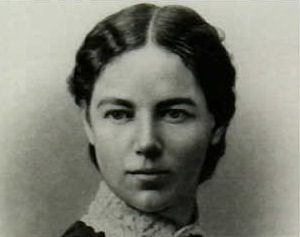
Clara Bewick was born in England, but grew up in Windsor, Wisconsin. One of six women in the UW-Madison’s first co-educational class, she graduated as valedictorian in 1869. The following year, she married Leonard Colby, a UW law graduate, and became known professionally as Clara Bewick Colby. Clara used her college education and childhood farm experience to work for the rights of rural women. She lectured in favor of women’s right to vote, working with suffragists Susan B. Anthony and Elizabeth Cady Stanton. In 1881 she became vice president of the Nebraska Woman Suffrage Association.
She founded The Women’s Tribune, a monthly newspaper, in Beatrice, Neb., in 1883. She moved the paper, the leading women’s suffrage publication in the nation, to Washington, D.C., in 1886.
The Colbys divorced in 1906. This strained Clara’s finances and drew unwanted publicity to the suffrage movement. She became an example of the kind of woman that national leaders thought would be viewed unfavorably by the public: if you gave women more rights, they would divorce their husbands and kick the men out. So despite all of her hard work, she was shut out of the U.S. suffrage movement. This is why she is not as well-known as other suffragists. Sinking further into poverty, unable to get her husband to pay alimony, she closed The Women’s Tribune in 1909. Eventually, Clara was forced to campaign and lecture to support herself, no matter what the weather and despite her declining health. She died of pneumonia in 1916, four years before the passage of the 19th Amendment.
SPONSORED BY AAUW LA CROSSE
Wednesday, March 17, 2021
Maud Malone (1873-1951)
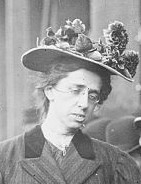
Maud Malone reinvigorated the suffrage movement with ideas some called militant. She is often labeled “Militant Suffragette” or “Militant Maud Malone” because some of her actions were similar to the more militant and sometimes violent British suffragettes. She worked in many organizations, but grew impatient with the lack of progress on women’s suffrage which in 41 years had resulted in only 4 states adopting women’s voting rights. The attendees at suffrage events were often those who already were in support, and she sought to challenge the thinking of all men and women. She introduced open outdoor meetings with question/answer periods, protests, and parades. She also would dare to shout out questions of “What about women’s suffrage?” during political speeches. She was arrested after interrupting President Woodrow Wilson at a campaign event, and was jailed for 60 days. Although she endured being booed, yelled at, punched and pinched, she used a dash of joy, humor, sarcasm and smiles throughout her efforts. She was successful in gaining the support of men who joined in her parades and meetings. After New York won suffrage rights in 1917, her tactics were adopted throughout the nation leading up to the adoption of the 19th Amendment.
SPONSORED BY AAUW LA CROSSE
Thursday, March 18, 2021
Josephine St. Pierre Ruffin (1842-1924)
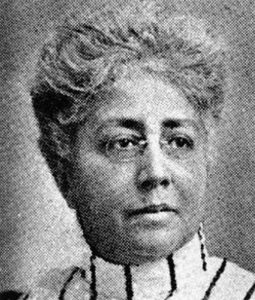
Josephine St. Pierre Ruffin was born into one of Boston’s leading families in 1842. Her mother was an English-born white woman and her father was from Martinique. At 16, she married George Ruffin, the first African American graduate of Harvard Law School. Ruffin dedicated her life to bettering the lives of women, especially African American women, both locally and nationally, often skillfully maneuvering between Black and white communities. She worked zealously to address the double jeopardy of racism and sexism experienced by women of color. Ruffin supported women’s suffrage and joined with Julia Ward Howe and Lucy Stone to form the American Women Suffrage Association in 1869 and saw suffrage as a step toward the equality of races. Ruffin was a charter member of the Massachusetts School Suffrage Association where she met Julia Ward Howe. She also worked on the suffrage movement with Susan B. Anthony and Elizabeth Cady Stanton. From 1890 to 1897, Ruffin edited Women’s Era, the first newspaper published by and for African American women. In 1894, she founded the Women’s Era Club, among the first African American Women’s organizations. It provided both opportunities for self-improvement and a forum to discuss issues affecting their communities. In 1895, she convened a conference of other Black women’s clubs that formed the National Federation of Afro-American Women. Through mergers it became the National Association of Colored Women in 1896, and Ruffin was elected first vice-president. Ruffin was also active in founding the Boston branch of the National Association for the Advancement of Colored People in 1910.
SPONSORED BY AAUW LA CROSSE
Friday, March 19, 2021
Stacey Abrams (1973-
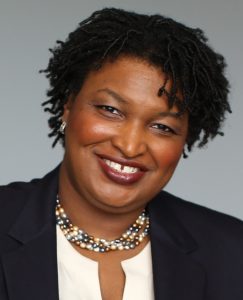
While most people think of voting right activists as people before the 1920 passing of the 19th amendment, even today we must remain vigilant against voter suppression. A current leader is Stacey Abrams, an American politician, lawyer, voting rights activist, and New York Times bestselling author who served in the Georgia House of Representatives from 2007 to 2017. Abrams was born in HYPERLINK “https://en.wikipedia.org/wiki/Madison,_Wisconsin”Madison, Wisconsin, and raised in Gulfport, Mississippi. In 1995, Abrams earned a BA from HYPERLINK “https://en.wikipedia.org/wiki/Spelman_College”Spelman College, magna cum laude. She earned a Master’s of Public Affairs degree from “https://en.wikipedia.org/wiki/University_of_Texas_at_Austin” University of Texas at Austin’s “https://en.wikipedia.org/wiki/LBJ_School_of_Public_Affairs” LBJ School of Public Affairs in 1998. In 1999, she received her Juris Doctor from Yale Law School. For the last decade, Abrams has focused on expanding voting access in Georgia and across the country. In 2014, one year after the US Supreme Court stripped back the protections in the 1965 Voting Rights Act, prohibiting racial discrimination at the ballot box, she co-founded the New Georgia Project, a group aimed at registering younger voters and people of color. In 2018, Abrams became the Democratic nominee for Governor of Georgia, winning at the time more votes than any other Democrat in the state’s history. She lost to Republican Brian Kemp by 55,000 votes in the state’s closest governor’s race in more than half a century. The race was marred by accusations that Mr Kemp, who was at the time Georgia’s secretary of state, had suppressed the votes of Black citizens by removing them from voter rolls. Over the course of her career, Abrams has founded multiple organizations devoted to voting rights, training and hiring young people of color, and tackling social issues at both the state and national levels. In 2018 Abrams launched Fair Fight, an initiative to fund and train voter protection teams in 20 states.
SPONSORED BY AAUW LA CROSSE
Saturday, March 20. 2021
Wendell Phillips (1811-1884)
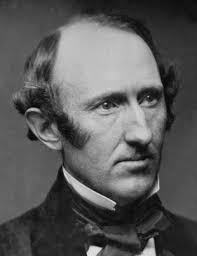
Wendell Phillips is known as one of the most brilliant orators of his time. He was called “the golden trumpet of abolition”. His simple, direct, and eloquent speeches were focused on abolition, social and civil rights of all people. He abandoned his wealthy family connections and his law practice to focus his life on changing opinions on slavery and rights of laborers, women’s suffrage, and rights of Native Americans. He was a major advocate of the 13th, 14th and 15th Amendment to the Constitution. After the 15th Amendment was passed, he devoted his efforts to the full civil and social rights of Blacks, women, laborers, and Native Americans. He was a member of the National Women’s Rights Committee, and worked closely with women suffragists in drafting petitions, appeals and resolutions defining the movement’s principles and goals. His address at the 1851 convention, “Freedom of Women”, was used in literature into the 20th century. His death was announced in newspapers across the country and his funeral was a state occasion with thousands paying tribute. A statue of him stands at Boston Public Gardens.
SPONSORED BY AAUW LA CROSSE
Sunday, March 21, 2021
Wilhelmina Kekelaokalaninui Widemann Dowsett (1861-1929)

After the annexation of Hawaii to the United States, Dowsett became a prominent leader of women’s suffrage. In 1912, at the request of the women of Honolulu, she organized the National Women’s Equal Suffrage Association of Hawaii (WESAH), the first Hawaiian suffrage organization. Carrie Chapman Catt came from the mainland in 1918 to speak to the group. Hawaiian women became enfranchised along with their sisters on the continent when the 19th Amendment became part of the U.S. Constitution in August 1920. As residents of a U.S. territory, however, their elected representation was limited. It would take another 39 years for Hawaii to become the 50th state in the Union, and the residents of Hawaii, both male and female, to gain full U.S. voting rights. Dowsett did not live long enough to see that day; she died December 10, 1929.
SPONSORED BY AAUW LA CROSSE
Monday, March 22, 2021
Frances Barrier Williams (1855-1944)
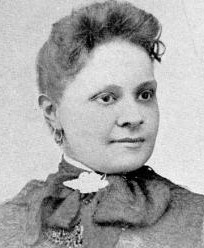
Frances Barrier Williams was born in Brockport, New York to a prominent Black family, one of only a few in Brockport. She did not experience much overt discrimination growing up. Barrier graduated as the first African American from Brockport State Normal School. Upon graduation, she moved to Hannibal, Missouri to teach Black students and experienced a level of discrimination that led her to become a reformer for the oppressed, especially women of color. Later, she gained a teaching position in Washington, D.C. and met her husband, a lawyer. They moved to Chicago where he had a successful law practice, and they joined the city’s elite Black community and became activists. Williams joined the Illinois Women Alliance (IWA), an interracial labor and reform organization, becoming vice president in 1889. She represented the viewpoint of Black Americans in the IWA and lectured frequently on the need for all women, but especially Black women, to have the vote. In an 1893 speech, she argued that former female slaves were the equals of other women and urged white women to support suffrage for all. Williams’ contribution to the suffrage movement was recognized in 1907 when she was the only African American selected to eulogize Susan B. Anthony at the National American Women Suffrage Association convention. Williams founded several organizations for colored women between 1893 and 1909 and was the first Black woman to serve on the Board of the Chicago Public Library and to be inducted into the Chicago Woman’s Club in 1896.
SPONSORED BY AAUW LA CROSSE
Tuesday, March 23, 2021
Adelina “Nina” Otero-Warren (1881–1965)
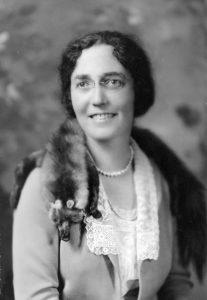
Adelina Isabel Emilia Luna Otero was born on October 23, 1881 on her family’s hacienda near Los Lunas, New Mexico. From 1892 to 1894, Otero-Warren attended Maryville College of the Sacred Heart in “https://en.wikipedia.org/wiki/Saint_Louis,_Missouri” Saint Louis, Missouri. This school helped develop her social consciousness, and it imparted the idea that women could have careers as teachers and community leaders. Adelina married a cavalry officer, Lieutenant Rawson D. Warren in 1908. Two years later, Otero-Warren divorced her husband. Divorce was frowned upon at that time, so she kept her hyphenated name and told people she was a widow. In 1914, Otero-Warren started working with the woman’s suffrage campaign in New Mexico. In 1917, she became the first Mexican-American state leader of the Congressional Union (CU) in New Mexico, and her leadership rallied support from both the Spanish- and English-speaking communities. She insisted that suffrage materials be published in both languages to reach the large population of Spanish-speaking women in New Mexico. She played such an important role in this activist effort that Alice Paul, the leader of the CU, credited Otero-Warren with ensuring New Mexico ratified the Nineteenth Amendment. Otero-Warren created a legacy of civil service through her work in education, politics, and public health. She became one of New Mexico’s first female government officials when she served as Santa Fe Superintendent of Instruction from 1917 to 1929. Otero-Warren was the first Latina to run for Congress. In the early 1930s, together with her partner, Mamie Meadors, Otero-Warren homesteaded 1,257 acres of land near Santa Fe, which they named Las Dos (“The Two Women”) Ranch. She and Meadors established Las Dos Realty and Insurance Company in 1947. Until her death in 1965, she continued her life in New Mexico as a businesswoman, educator, writer, and political activist.
SPONSORED BY AAUW LA CROSSE
Wednesday, March 24, 2021
Sarah Grinke (1792-1873)
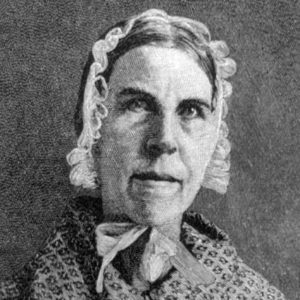
Sarah was an abolitionist and considered by many the “mother of the women’s suffrage movement”. As the daughter of a wealthy slave-owning family, Sarah learned firsthand of the mistreatment and injustices slaves endured. Her father owned a large plantation, was an attorney, a South Carolina Supreme Court Judge, and legislator. He endorsed slavery and women’s subservient position. He was opposed to Sarah’s education in substantive subjects such as law, math or science. He was furious when she attempted to teach slave children to read which was illegal in South Carolina. Sarah moved to Pennsylvania where she joined the Quakers and the abolitionist movement. She found that women’s rights were inexplicitly connected to arguing for the abolishment of slavery. She was ridiculed for speaking in mixed-gender crowds and for bucking conventional roles of women. Her speeches and her many writings formed the basis of ideas and arguments used by suffragists that came after her. She was quoted by late Supreme Court Justice Ruth Bader Ginsburg, and her life was the basis of a novel, The Invention of Wings (2014), and a character in a play If She Stood (2013). She was inducted into the National Women’s Hall of Fame in 1998.
SPONSORED BY AAUW LA CROSSE
Thursday, March 25, 2021
Maud Leonard McCreery (1883-1938)
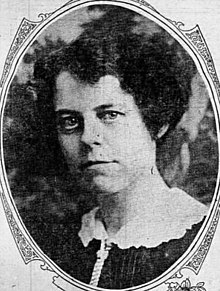
Born in Wauwatosa, Maud Leonard McCreery was a suffragist, labor leader, and newspaper woman. From 1912 through 1918 McCreery toured the United States speaking about votes for women. She did suffrage promotion in Nebraska, South Dakota, Pennsylvania, and Iowa. McCreery served as press chair of the Nevada Equal Suffrage Association in 1914 and legislative chair of the Woman’s Party in Milwaukee in 1918. After women earned the right to vote in 1920 she turned her considerable organizing, speaking, and writing skills to newspaper and labor activism work. Her career included work for the Federated Press news service in Chicago, writing a woman’s page for the Milwaukee Leader, and employment with the Milwaukee Federated Trades Council and the Farm-Labor-Progressive Federation. In 1936 McCreery became editor of the Sheboygan New Deal, a labor newspaper. The following year she was hired as area organizer for the American Federation of Labor and also taught in the School for Workers at the University of Wisconsin. She died in Milwaukee in 1938. McCreery had been married and divorced twice. In 1945 the Maud McCreery Lodge was founded in Milwaukee, named in her memory by the Ladies’ Auxiliary of the machinists’ union local.
SPONSORED BY AAUW LA CROSSE
Friday, March 26, 2021
David Goodrich James (1843-1921) and Ada Lois James (1876-1952)

David James was born in New Hampshire and moved with his family to Richland County, Wisconsin. He married Laura Briggs and they had one daughter, Ada. All three were involved in the suffrage movement. In 1882, Laura was one of the founders of the Richland Center Woman’s Club that worked for women’s suffrage. In 1911, Ada was a founding member of the statewide Political Equity League. David was elected to a four-year term as state senator in 1908. Principally due to the work in 1911 of Ada and her father, a suffrage bill passed the Wisconsin Legislature to be voted on by a statewide referendum. Unfortunately, in November of 1912, the referendum failed. Finally, on June 4, 1919, the US Senate passed the 19th Amendment giving women the right to vote, but it could not become law without ratification by 36 states. The race was on to be the first state to ratify the Amendment. Illinois ratified the amendment on June 10th about an hour before Wisconsin did, but the official time was when the state filed its papers in Washington, DC so Wisconsin still had a chance. The Wisconsin Governor appointed David James to carry the documents to Washington in hopes he could beat Illinois. David left immediately by train and on June 13th filed the papers with the State Department, and received a signed statement that Wisconsin was the first. Just as he was leaving, an Illinois representative entered the office in hopes of winning first place, but he was too late. Wisconsin had won the honors.
SPONSORED BY AAUW LA CROSSE
Saturday, March 27, 2021
Laura Ross Wolcott, M.D. (1826-1915)
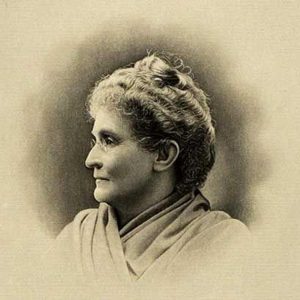
Dr. Laura Ross Wolcott had two obituaries printed in her local newspaper, approximately five or six decades apart. The first one was fake, placed by a male colleague who wanted her gone. He thought that her patients, seeing that she was dead, would seek out another doctor. But a rival newspaper in Milwaukee ran a story that Dr. Wolcott was, indeed, a bonafide physician and still very much alive. At the time woman doctors were considered “quacks.” Dr. Wolcott had graduated from the Women’s Medical College of Pennsylvania in 1856; the third woman in the United States to earn a medical degree. She was also the first woman medical doctor in Wisconsin. But the male doctors rejected her application to join the Medical Society of Milwaukee County because she was a woman. In frustration Dr. Wolcott moved to Paris, where she attended classes at the University of Paris and the Sorbonne, worked in a hospital, and served as a commissioner to the Paris World’s Fair. Upon her return to Milwaukee, Dr. Laura’s mentor, the highly respected Dr. Erastus Wolcott, smoothed the way for her admittance to the Medical Society of Milwaukee County. The two doctors eventually married. Dr. Laura Wolcott organized women’s suffrage meetings in Madison and Milwaukee. She became the first president of the Wisconsin Woman Suffrage Association and expanded the organization throughout the state. Dr. Wolcott arranged the first suffrage convention in Milwaukee in 1867, with Susan B. Anthony as primary speaker.
SPONSORED BY AAUW LA CROSSE
Sunday, March 28, 2021
Elizabeth Thatcher Kent (1863-1952)
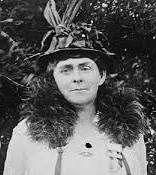
Elizabeth Thatcher Kent is remembered as a women’s rights activist and environmentalist. She was a visionary leader in winning the right to vote in California in 1911. Rejecting the high society events, she believed in the necessity of getting out and spreading the message of women’s suffrage at every opportunity. After California’s successful vote, she moved her activism to the national stage. She joined her husband in Washington D.C. where he was serving as a Congressman from California. She was the featured speaker at the 1913 and 1914 Convention of National American Women’s Suffrage Association and she led their Congressional Committee. She helped form the Congressional Union (renamed the Women’s Party) which picketed the White House. She was arrested and taken to jail. Her husband paid her bail to keep her out of jail over her objections. She lobbied members of Congress and testified before congressional committees. After returning to California, she and her husband purchased land to protect the cutting of redwood trees. They donated 295 acres to the Federal government which in now the Muir Woods National Monument.
SPONSORED BY AAUW LA CROSSE
Monday, March 29, 2021
Carrie P. Daniels (1851-1930)
In 1912 Carrie P. Daniels, a leader of the La Crosse Equal Suffrage League and one of the most earnest workers for the cause in western Wisconsin, began a year-long letter writing campaign to the La Crosse Tribune to share her views on suffrage. Carrie’ husband, Judge John A. Daniels, an early champion of women’s suffrage in Wisconsin, supported her endeavors. In her letters Carrie appealed to the public for support of the movement and countered arguments against it. In one letter she wrote: “If intelligence is to be the rule in voting, cut out all the ignorant men.” In addition to her letters and her work with the La Crosse Equal Suffrage League, Carrie and her friend Florence Bunting, president of the La Crosse Woman Suffrage Association, represented La Crosse at the 28th annual Wisconsin Woman Suffrage Association in Madison. She helped plan the May 2, 1914 Suffrage Day celebration and circulated petitions for an amendment to the Constitution giving women the right to vote. Researched and written by Terry Visger.
SPONSORED BY AAUW LA CROSSE No picture of Carrie Daniels is available; the attached picture is of Florence Bunting, mentioned in the paragraph.
Tuesday, March 30, 2021
Robert Purvis 1810-1898
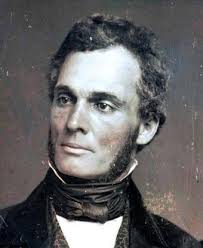
Abolitionist and political leader Robert Purvis was born in Charleston, South Carolina in 1810 to William Purvis, a wealthy cotton merchant, and Harriet Judah, a woman of Jewish and African ancestry. As an abolitionist, Purvis worked hard to harbor runaway slaves, especially as a member of the Philadelphia Vigilance Committee, earning him the title of President of the Underground Railroad. Work in the anti-slavery movement drew him into causes, including women’s suffrage, temperance, and the rights of Native Americans. When Lucretia Mott was president, he was a member of the “https://en.wikipedia.org/wiki/American_Equal_Rights_Association” American Equal Rights Association. Purvis also attended the founding meeting of the Pennsylvania Woman Suffrage Association and served as the first vice president. He was criticized for his stance on the “https://www.encyclopedia.com/social-sciences-and-law/law/law-divisions-and-codes/fifteenth-amendment” Fifteenth Amendment, which was ratified in 1870. A lifelong champion of women’s rights, Purvis contended that African-American men should not be enfranchised unless women received the vote. He believed in integrated groups working for greater progress for all. “In the matter of rights,” he would often state, “there is just one race, and that is the human race.” By the end of the Civil War, which gained the emancipation of slaves and suffrage for black men, Purvis had reached his late 50s and became less active in political affairs. Robert Purvis died in Philadelphia at the age of eighty-seven, survived by his second wife and four of his eight children.
SPONSORED BY AAUW LA CROSSE
Wednesday, March 31, 2021
Bertha Pratt King (1879-1962)
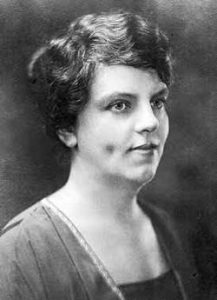
In the early 1900s Bertha Pratt King, a native of Little Falls, New York, graduated from Smith College and came to Terre Haute, Indiana. In 1905 she established the King Classical School, whose mission was to prepare girls for college and gainful employment. The school gained great popularity, was considered a very good college preparatory school, and was approved by the State Board of Education. It flourished until Bertha Pratt King’s retirement and the school’s closure in 1945. While teaching and running the school, King became very involved in the suffrage movement. In 1914-15 she traveled on lecture tours through Indiana, Illinois, Ohio and Pennsylvania. In 1919-20 she went on suffrage campaigns in Ohio, Wisconsin and Indiana. She was outstanding in literary, educational and suffrage circles in Terre Haute and surrounding areas. During Bertha Pratt King’s teaching years she wrote a book The Worth of a Girl. She organized the Forerunners Club, whose members were dedicated to the suffrage movement. King married long-time friend, poet and philosopher Max Ehrmann after her retirement in 1945. However, he died after only a few months of marriage.
SPONSORED BY AAUW LA CROSSE

